





















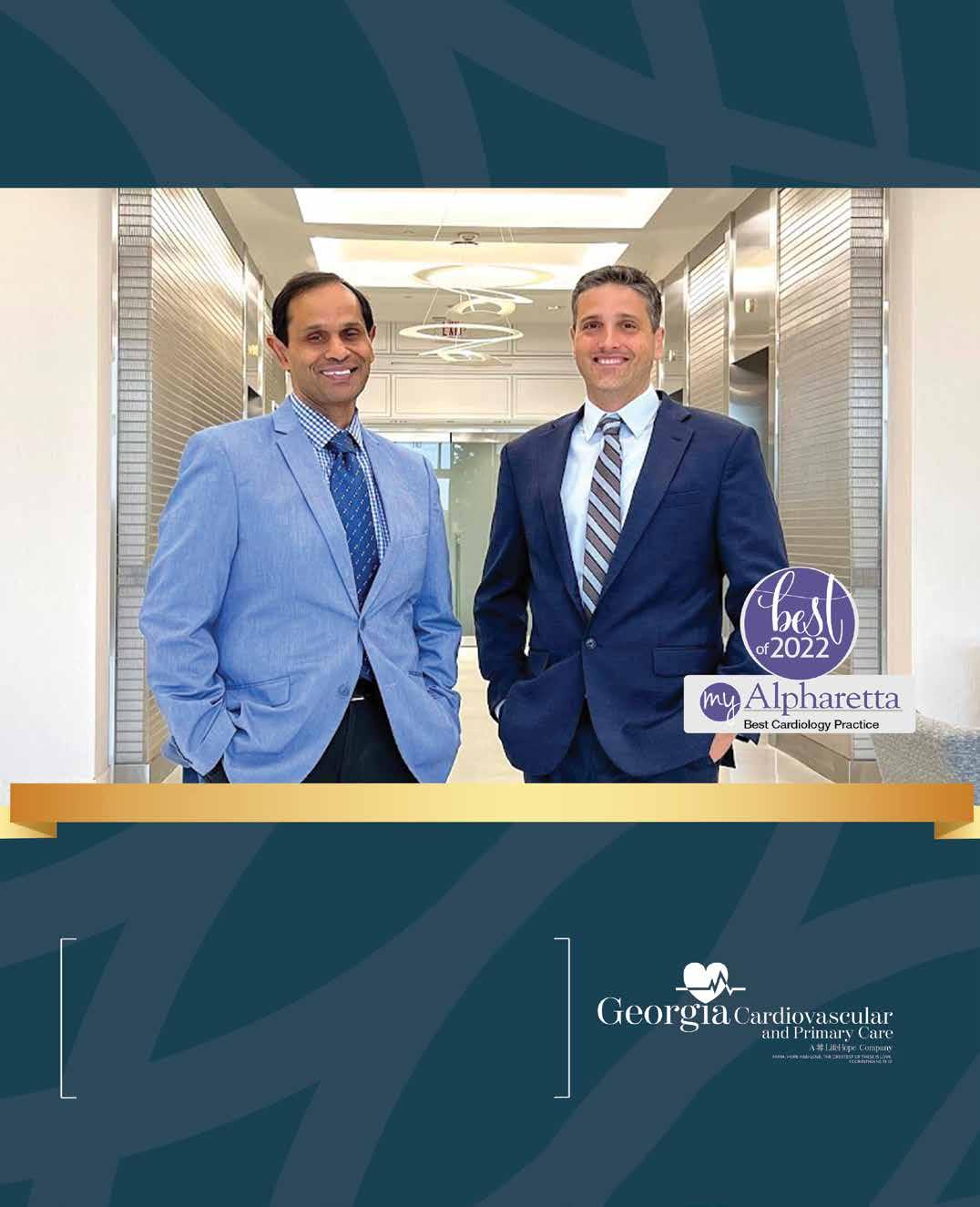


End-of-year giving is about much more than rushing to meet a December 31 deadline. It’s about having a solid philanthropic investment plan. Atlanta Jewish Foundation is here to help you create one.
You can turn cash, real estate, or other investments into powerful charitable gifts through a donor-advised fund (DAF)—your charitable “checkbook.” Don’t have a DAF? We’ll get your started!
We can partner with you and your financial advisor to create a charitable giving plan that will most benefit you and the causes you care about. Invested in JewishATL
We’re full of proven ideas that can help maximize your generosity while optimizing your tax savings.
Start a conversation with us today. Contact Jori Mendel, Chief Foundation Officer at jmendel@jewishatlanta.org or 404.951.6900.
A shout out to the Atlanta Kosher BBQ Festival and all who participated and attended. The AJT had a fantasitc time and we appreciate our 1st place trophy.


Due to the tremendous amount of submissions, the announcement of our 40


40 winners will be in the
Cover
Professionals and Real
issue on November 30.

Emory University’s historical South ern Jewish Archive formally unveiled three important collections of docu ments at a reception on Oct. 19. The pro gram, held at the Emory library, included an appearance by Emory president Greg ory Fenves, who is Emory’s first Jewish president and the son of Holocaust survi vors. He praised the role that the archives have played in Jewish history.
“With this archive and a fellowship to support researchers, we’ll get a chance to uncover the distinct tradition, chal lenges, and the contributions that Jews have made in the South for hundreds of years. This important slice of Ameri can history is not as widely known as it should be, and we want to spread this knowledge of the Southern Jewish expe rience.”
The new archives feature the pa pers of Georgia’s Morris Abram, a noted civil rights attorney and an early presi dent of Brandeis University and, later, the national leader of the American Jewish Committee. Also, the library has completed cataloging the papers of Jack Boozer, an influential Emory professor of religion, and Bert Lewyn, an Atlanta busi nessman and a survivor of the Holocaust whose memoir, “On The Run In Nazi Berlin,” was written with his daughterin-law Beverly Salzman Lewyn. It was the story of his 2 1/2-year ordeal hiding out in wartime Germany after escaping from a Berlin weapons factory, where he was a slave laborer.
After the war, he came to America to live with his great uncle, Rabbi Tobias Geffin, who for 60 years was the spiritual leader of Atlanta’s Shearith Israel syna gogue.
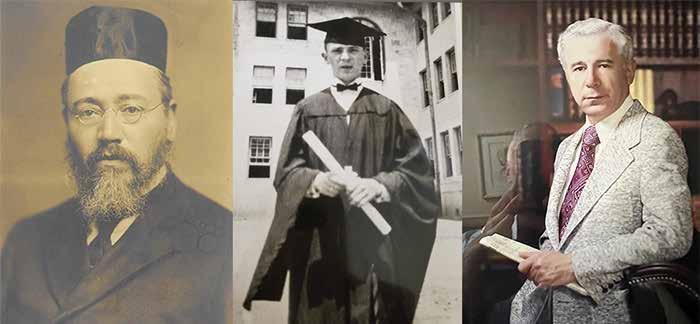

The Emory president told the story, not generally known, that back in 1919 Rabbi Geffin approached the university about helping his son, an observant Jew who would soon be attending classes there. He asked that the young man and the other practicing Jewish students there who had to attend classes on Sat urday not have to take notes then or be given tests on that day. Then-president Asa Candler agreed and soon the obser vant Jewish students were helped with their note taking and testing. Eventually, Emory dropped Saturday classes.
Rabbi Geffin later was called upon by the Coca-Cola Company to certify a special bottling of their soft drink as ko sher for Passover. At the reception, the
typewritten letter from the rabbi to the company, that approved the product, was on display.
Both the Geffin and Lewyn families sponsored the program. They have been financial supporters of Emory’s Southern Jewish Archive and have underwritten a new program, which was made public at the October event. It will provide finan cial assistance to scholars who wish to research the archive.
The highlight of the Emory recep tion was a presentation about another important event in Atlanta Jewish his tory, the dramatic 1958 bombing at The Temple in Atlanta. The presentation by local author Melissa Faye Greene was based, in part, on extensive research she conducted at the archive. Her book about the blast, “The Temple Bombing,” was a national best seller and a finalist for the National Book Award for non-fiction.
In an illustrated half-hour lecture at the gathering. Greene recounted the events leading up to the bombing, which was a watershed moment in Atlanta his tory. As she pointed out, the era was a dif ficult time for Southern Jews and others who spoke out in support of equal rights for African Americans. In the same year as The Temple was attacked, she noted, there were almost four dozen bombings or attempted bombings in the South.

Six of them were Jewish buildings. Dur ing the 1950s and 60s, 10 percent of the bombs detonated by white supremacists targeted synagogues, rabbis’ homes, and Jewish community centers.
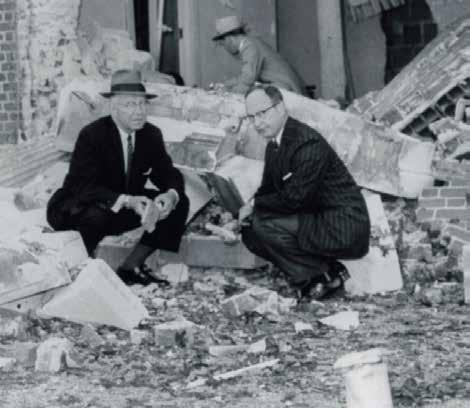
She recounted the role of Rabbi Ja cob Rothschild as a leading figure in the civil rights movement of the 1950s and 60s. As Greene described it in her lecture, the Atlanta rabbi was fearless.
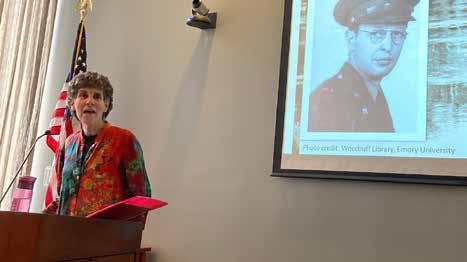
“Rothschild wrote to a friend in March 1958 that ‘If this is dangerous, then I shall have to live dangerously, be cause I firmly believe it’s my responsibili ty as a rabbi. And even if I weren’t a rabbi, it would be my responsibility as a human being. Don’t think that I like endangering

the security of our institutions and even my family, G-d forbid. But I’m here and life requires it, and so be it.’”

Rabbi Rothschild, as Greene pointed out, also played a key role in honoring Dr. Martin Luther King, Jr. after the At lanta icon won the Nobel Peace Prize in 1964. The celebratory dinner, which was planned to follow Dr. King’s return from the Nobel ceremony, was not initially greeted with enthusiasm by the white business community.
Eventually, the efforts of Rabbi Rothschild and Coca-Cola executive Bob Woodruff paid off. There were over 1,500 guests at the sold-out dinner in the big gest ballroom in Atlanta. ì
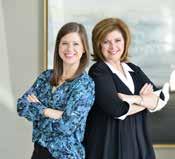




 By Bob Bahr
By Bob Bahr
Three members of Atlanta’s Jewish community played a major role in the re cent groundbreaking for an expansion of the National Center for Civil and Human Rights in Centennial Olympic Park.


The ceremony, which took place on Oct. 14, was the culmination of an am bitious fundraising effort started three years ago when the president and CEO of the center, Jill Savitt, came to Atlanta from the United States Holocaust Memo rial Museum in Washington, D.C. So far, the center has raised $27 million in a cap ital campaign with a goal of $50 million.
In her remarks, Savitt expressed her deep appreciation to Arthur Blank and the Arthur Blank Family Foundation, whose $15 million gift last year provided the impetus for construction to begin. One of the two buildings to be built will be named in his honor.
The groundbreaking comes just two weeks after Blank’s 80th birthday, which was celebrated by a week of philanthrop ic efforts in his name.
Althoug he did not attend the event
at the center due to previous commit ments, Blank recently said the birthday milestone was, for him, only a number.
“I believe getting older is a blessing, but I certainly do not focus on the num ber. I’m reminded of the opportunity that each one of us has every day, no mat ter how old we are, to live a life of pur pose, and seeing that purpose transcend through surrounding communities gives me energy and optimism each day.”
Joining Blank and Savitt is A. J. Rob inson. He is the center’s vice chairman and the third member of the community to play a key role in both the opening of the center and the success, thus far, of its capital campaign.
Robinson, who has been an occa sional editorial contributor to the At lanta Jewish Times, is the president of Central Atlanta Progress and the Atlanta Downtown Improvement District. In his remarks, he paid tribute to the remark able political support the center has received over the years. He described former Atlanta Mayor Shirley Franklin, who headed city government from 2002 to 2009 and has been the facility’s chair person since its founding, the center’s “secret weapon.”
“She saw the great value of this proj ect to be in Atlanta,” Robinson said, “al lowing us to connect our unique history to our present day and future challenges. She made it her priority, while mayor, to honor civil rights icons, that are memo rialized at the center, for generations to come. And she secured the purchase of Dr. King’s papers, which make this truly a sacred place.”
In 2006, Franklin, as mayor, secured $32 million to purchase a collection of

10,000 documents from Dr. Martin Lu ther King Jr.’s estate that are now housed at Morehouse College. A selection of the documents, many of them handwritten by Dr. King, rotate as a part of the cen ter’s public exhibits.
According to Savitt, the center’s chief executive, the Dr. King collection will receive more space and play a more prominent role in the new construction, which is expected to be open to the public in June 2024.
In a recent conversation, Savitt said that the new east wing, which will be named after Blank, will fill an important need. She believes it will help give chil dren a greater appreciation of America’s struggle for civil and human liberty.
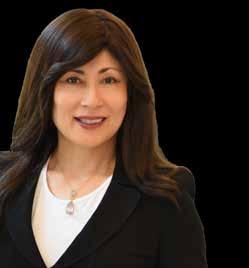
“The family center is going to be an incredibly creative, hands-on space that helps children understand how to be en gaged citizens. And it’s going to be play ful, joyous, and have arts and music and performance and all kinds of ways for us to talk to kids about fairness.”
Savitt said the new construction will provide space for a temporary gallery where traveling exhibits can be present ed and a room for the center where they can present their own programs that re spond to contemporary developments in the world. Right now, she noted, ev erything on exhibit is permanent, which doesn’t encourage visitors to return.
A final gallery in the new west wing will be about racial violence and its his tory in America. Although Blank was not able to attend the groundbreaking, Savitt credits Blank’s support over the years that
has made this possible.
“He truly appreciates the unique, profound, transformational role that Atlanta has played in encouraging equal ity and respect for all people. And he has
great reverence for the icons of the civil rights movement, John Lewis and be yond, and everybody who made Atlanta this brain trust that changed not only the country but changed the world.”
For the first time, the new National Center building will be able to offer programs in a dedicated space for children.


Also in attendance at the groundbreaking were Atlanta Mayor An dre Dickens; two members of Georgia’s Congressional delegation; and represen tatives from Atlanta’s philanthropic com
munity. The center’s capital campaign has the financial support of the CocaCola Foundation, UPS, Georgia Power, the Southern Company, Home Depot and Georgia-Pacific, among others. ì
Enjoy gourmet kosher cuisine, luxury accommodations, a 141-acre water park including 5 miles of white sand beaches and one-of-a-kind experiences for the entire family.



KOSHER GRILL Serving Breakfast, Lunch and Dinner
MEALS Served Friday and Saturday
 By Sasha Heller
By Sasha Heller
More than 4,500 community mem bers gathered on a picturesque Sunday afternoon at Brook Run Park in Dun woody for the 10th anniversary of the At lanta Kosher BBQ Festival.

Presented by the Hebrew Order of David (HOD), the event featured bar beque teams from around the country vying for glory in the categories of: Beef Brisket, Beef Ribs, Chicken, Chili and more. Members of the Atlanta Kashruth Commission oversaw the preparation standards and provided kosher certifi cations for all the competing cooking teams.
“The weather, the aroma, the energy, the camaraderie,” said Atlanta Kosher BBQ Festival Executive Director Jody Pol lack. “What an amazing way to celebrate the 10th anniversary of the Atlanta Ko sher BBQ Festival! Great venue.”
Noah’s Bark took home the coveted Grand Champion prize. The complete list of winners is as follows:

Lodge
(Plumbing Express);
Cow Rib
(HOD Lodge Bezalel and Congregation Or Hadash); Challa’d Greens (Atlanta Black-Jewish Coalition); CMCH Flames; I’ll Have What She’s Having (Congregation Or VeShalom and HOD Lodge Magen Da vid); Noah’s Bark (Temple Kol Emeth);
Smokin’ Hot Off the Press (Atlanta Jew ish Times); Hermano A Hermano (HOD Lodge Tikvah, Houston); The Wandering Q (Ahavath Achim Men’s Club); Master ful Mensche’s of Meat (Congregation Beth Shalom); Rest in Meat (Dressler’s Funeral Care); Moshe Ribeinu (Congre gation Etz Chaim); War Wagon (DeKalb Fire and Rescue Department); Don’t But
ter my Brisket; Burnt Offerings (Palm Beach Synagogue, Palm Beach, Fla.); Peeps Pit (Aventura, Fla.); Halburnt Of ferings; Cloven Hoof; Feederation (Jew ish Federation of Greater Atlanta); Alpha Epsilon Pi.
The festival also featured a Kids’ Zone, community expo, silent auction, and live music. ì




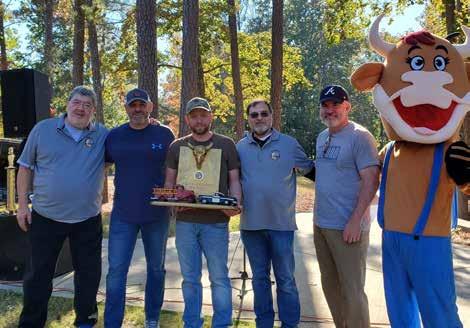

Barbeque enthusiast Ryan Posner grew up in Marietta, graduated from Walton High School, then marched and played trumpet in the University of Geor gia Redcoat Band. These days, however, he entertains for crowds, staying up into the wee hours perfecting his grills, while sporting an imposing cowboy hat and driving an ice blue classic Lincoln.
He mused, “My passion for enter taining friends and family with barbeque came from watching old “Dallas” televi sion episodes where the Ewing family hosted their annual barbeques.”
At UGA, he developed skills support ing various departments and campus organizations, including UGA Hillel, with technology infrastructure and web sites which led him down a career path of implementing and project managing accounting, marketing, and human re sources systems. Currently employed at S Phase in project management, he oversees technical project initiatives that support peer-to-peer medical education programs for health care providers in hematology and oncology. His spare time is spent mastering his BBQ skills and at tending services regularly at Ahavath Achim synagogue.
Posner got interested in BBQ after he and wife, Ana, moved into their Grant Park home in 2016 and acquired his late father’s old charcoal kettle grill. Previ ously, his platform was a gas grill. Posner elaborated, “The flavor profile that devel oped in my food from the charcoal was a
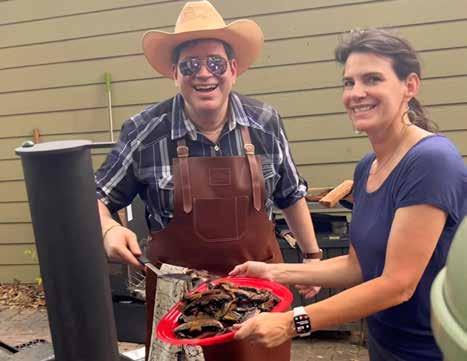
game changer. I started researching more into this charcoal gateway to learn more about cooking ‘low and slow’ with the pri mary ingredient of smoking wood.”

For Ryan, it’s not all about beef. He also prepares meat and vegetarian Brunswick stew. If not barbequing, he’s baking Neapolitan and Detroit-style piz zas, or homemade pasta and casserole dishes. In addition to brisket, he smokes chicken, salmon, and his annual Thanks giving turkey. For vegetarian friends, he does Portobello mushrooms marinated in butter, oil and spices.
Sense Ryan’s enthusiasm in a discus sion with the AJT:
AJT: Why do you stay up all night?
Posner: For brisket, I stay up to maintain a slow cook to ensure guests get a tender product. The slow process is essential in melting down the collagen for tenderness. There is an adrenaline rollercoaster during an all-night cook with a mix of tranquility, from not being bothered by the normal daytime distrac tions, to fear of accidentally starting an uncontrollable fire. I use a FireBoard smart thermometer probe system which alerts my phone on the temperatures. The alerts are helpful in assuring a con sistent and safe cook.
Posner: My dad’s kettle grill rusted, and it literally had no legs to stand on. I started exploring ceramic cookers, pellet grills and traditional offset smokers, then settled on the latter by Yoder Smokers to
get a better absorption of smoked wood flavor. I also expanded with a Gozney Dome pizza oven which can also be used to smoke foods.
AJT: From start to finish, how many hours?
Posner: A 12-pound brisket takes 16 hours.: 12 hours to cook (one hour per pound); two hours to prep the smoker, trim and season the brisket; and two hours for the brisket to rest before it is served.

Posner: I try to prepare food well enough so no one will even think of sauc
ing it. If some extra flavor is desired, Wil liamson Bros. Bar-B-Q sauce.
AJT: Embellish your involvement at AA. Your Mendel family tree has impor tant roots there.
Posner: I returned to Judaism and joined AA after a touching ceremony from my nephew’s bar mitzvah at Temple Sinai last February. I have been going to Saturday services regularly. Ana, who is not Jewish, has been welcomed with open arms. We enjoy gatherings with our new extended family of AA congregants. We also hosted brotherhood events at home where I baked pizzas. ì
* Good things come to those who wait, don’t rush the process. Avoid having im patient and hungry guests by planning your cooks ahead. Plan to have your smoked food ready 2-4 hours in advance of serving them where they are resting wrapped in foil or butcher paper in an insulated container.

* Have a good instant thermometer temperature probe to gauge the process of your cooks as well as ensure the temperature for meats, such as poultry, have reached the safe consumption level of 165 degrees.
* For beef, develop a good outer crust or “bark.” Try not to spritz meat until the bark is set, typically after 2 hours.
* Only use smoking woods sourced from nut or fruit trees. Burning wood from trees with high levels of sap such as pine won’t taste good and may make people ill.
* To avoid a consistent stream of white smoke, have well-seasoned and dried out smoking wood.






* The smoked wood flavor stops absorbing around the internal temp of 140 degrees so don’t wrap meat before then.
* Plan your BBQ.
* Source quality wood.
* Trim the fat but not so much that there isn’t enough to render through the meat during the cook. Look to trim down to a quarter inch.
* Don’t under- or over-season your food.

* “If you’re looking, you ain’t cooking”: Retain the heat inside of your smoker by only opening it when necessary.
* Keep your food from drying by keeping a water pan in your smoker and spritzing your food.
* Maintain a consistent cooking temperature and ensure the fire doesn’t burn out. For a brisket, I run my cooking temperature around 235 degrees while trying to avoid swings greater or less than 10 degrees.
* Maintain a clean fire because white smoke ain’t no joke. You want a blue or almost translucent smoke to ensure your food doesn’t inherit a bitter smoke flavor.
* When the internal temperature has reached 145 degrees, wrap the meat in either butcher paper or aluminum foil.
* Wrap the meat when it reaches ~205 degrees and let it rest in an insulated cooler for 2-4 hours.

“Becoming Dr. Ruth,” written by Mark St. Germain and starring Eileen Koteles, will return to Atlanta on Nov. 13, 17, 19 and 20 at Temple Emanu-El.

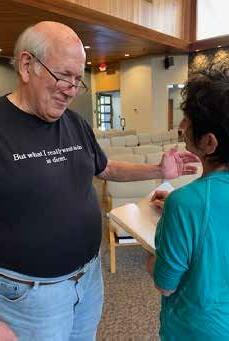
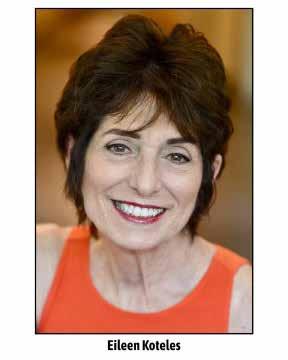
George Fox, well known for direct ing several successful productions at the Marcus Jewish Community Center of At lanta (MJCCA), Etz Chaim, Temple Ema nu-El and Dunwoody United Methodist Church, will direct the one-woman show. He has directed such well-known hits as “Joseph and the Amazing Technicolor Dreamcoat,” “Annie, Get Your Gun,” “Glo ry Days” and “My Fair Lady.” Producer is Sandy Ferko, who has worked with Fox on several previous productions through out Atlanta.
Chronicling the life of Dr. Ruth Wes theimer, Koteles takes the audience on a journey through the famous sex thera pist’s life, from her escape to Switzer land as a young child attempting to flee the Holocaust to her stint as a sniper for Haganah during Israel’s 1948 fight for statehood. Her hard work, and yet almost serendipitous rise to become America’s foremost sex therapist, is recounted in this moving and funny show.
Performed in the temple’s sanctu ary, the staging takes Koteles as Dr. Ruth into the audience to tell her story. Ac cording to Fox, “The chairs in the sanc tuary will be rearranged to facilitate Dr. Ruth getting as close as possible to au dience members. Eileen truly becomes Dr. Ruth, nailing her accent and man nerisms, and we want people to feel that they get to know her during the show,” he shared.
Fox, his wife, Michele, and Ferko first saw Koteles perform the show in Dalton, Ga. All four knew each other from past productions they had worked on togeth er. They were so impressed that they de cided to bring the show to Atlanta. The first run was at Dunwoody’s Stage Door Theatre in February 2021. Due to COVID, the audience size had to be greatly limit ed, but the group was determined for the show to be seen by a broader audience at some point in the future. Almost a year ago to the day, the team began discussing a November 2022 revival of “Becoming Dr. Ruth” at Temple Emanu-El with Rabbi Spike Anderson.
Fox has held a longtime love af fair with the theatre, beginning in high school when he served as the assistant to his camp’s acting director. When the director resigned four years later, Fox stepped in to manage the summer pro
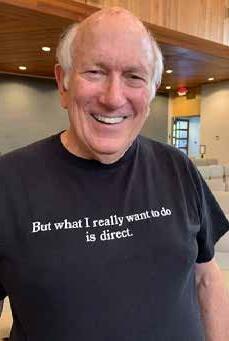
ductions for the camp. Fast forward to Emory University School of Law, when Fox and two university deans founded Ad-hoc Productions, and began staging shows at the university for students, fac ulty and friends. Describing himself as a self-taught director, Fox believes his early introduction to the theatre as a young boy in New York City made him a keen observer of human behavior, whether onstage or off.
“I would watch each show to see how they worked. I wanted to know what ap pealed to audiences,” said Fox.
“George often brings in an audience in advance of opening night to see how people will react to the show,” said Car
ole Schemo, who has acted in several of Fox’s productions. "He pulls out the very best in his actors and helps them to lit erally become their characters. People who have been in his shows know that he will change details even through the production’s run, striving for the best possible version of each performance,” she stressed.
Ferko has worked as the producer on several of Fox’s shows. The two first met at Temple Emanu-El. In fact, Ferko fol lowed Fox as president of the congrega tion. As he planned to stage “Joseph and the Amazing Technicolor Dreamcoat,” his first production at the MJCCA, Fox asked Ferko to be his producer. While
initially hesitant since she had not par ticipated in theatre since her days in high school, Fox felt confident Ferko could do the job.
“For George’s birthday, I gave him a box that contained a note that read, ‘For your birthday, I will produce your show.’ And here I am, eight shows later. We call my response that day the gift that keeps on giving,” joked Ferko.
Show times for “Becoming Dr. Ruth” are 4 p.m. on Nov. 13 and Nov. 20; 7 p.m. on Nov. 17; and 8 p.m. on Nov. 19. Tickets are $36 for adults and $18 for students and may be purchased at templeemanu elatlanta.shulcloud.com/event/becom ing-dr.-ruth.html. ì







This year’s Rothschild lecture at Em ory University will feature a discussion about the importance for the Jewish com munity to build political coalitions that are multi-ethnic and multi-racial.
The lecture on Nov. 7 is sponsored by the Tam Institute for Jewish Studies, in memory of Rabbi Jacob M. Rothschild who was the senior rabbi of The Temple in Midtown Atlanta from 1946 to 1973.
Featured in the Emory lecture is George J. Sánchez, a professor of Ameri can studies and ethnicity and history at the University of Southern California. He will be discussing his research into the development of the Jewish community in the Boyle Heights neighborhood of Los Angeles. It was considered the heart of the Jewish community there immediately be fore and after World War II. There were once so many Jews living there that it was called Los Angeles’ Lower East Side.
He is particularly interested in how that Jewish community encouraged greater political participation by the Lati no community that was moving into the neighborhood during the 1950s and how Jews responded. His topic for the Roth schild lecture is “What’s Good for Boyle Heights Is Good For The Jews.”
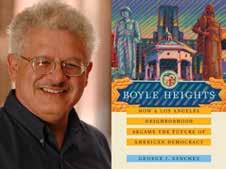
In a recent interview, he explained that the Jewish community at the time, for a variety of reasons, felt that it was important for those living in Boyle Heights to extend a helping hand to other minorities.
“What I am looking at, in particu lar, is the transition that occurred in this very significantly Jewish community. It made up probably 40 percent of the pop ulation in Boyle Heights in the post-war period but, nonetheless, they made sure that the Mexican American community got politically empowered there.”
Significantly, Jews worked to elect a Hispanic member of the community to the Los Angeles City Council in 1947 for the first time in the 20th century and to re-elect him for the next 13 years. And although many Jews were moving to the suburbs in the 1950s, those that stayed behind, especially those who had ties to labor unions and leftist political groups, worked to bring the community together in a political coalition.

“Because the Boyle Heights com munity was so much tied to the Jewish community, they felt it was important to make sure that the residents feel em powered, feel like they can participate democratically in what was going on.
So, there’s a socialist tradition, there’s a labor union connection. But even more than that, there’s actually an organized Jewish community response which was a kind of multiracial approach in the wake of World War II.”

But Sánchez points out that this kind of community effort was short lived; in part, because of the chilling ef fect that came in the late 1940s and early 1950s with the influence of Sen. Joseph McCarthy, and the anti-Communist cru sade led in Washington by the House Un-American Activities Committee. But more so, by the move that Los Angeles Jewish community made at the time to all-white suburbs.
“Basically, from the 1940s to the 1970s, you had increasing demographic separation between all these groups. Jews and other white ethnics basically left
those communities for the suburbs. And so, you had what most scholars term a kind of ‘whitening’ of the Jewish commu nity, a venture into whiteness, into sub urban living, and acceptance into those restricted neighborhoods that they had previously not been allowed into.”
The result of the re-segregation of Los Angeles, Sánchez believes, led to pro found changes in race relations: first, after the riots in the Watts neighbor hood of Los Angeles in 1965, and later, in the racial tension that led to violence in 1992 and tensions between police and the community. The destructive results that these events had on civic life in Los Angeles has caused Sánchez to question whether you can build communities to day that include Jews and other minori ties that are able to head off these explo sive confrontations.
The issue he believes is as important for Atlanta as it is for other big cities that are going through changes in the racial make-up of their populations.
“There needs to be, among elected politicians, a kind of discussion that can overcome simple racial dynamics and re ally deal with the complexity of our soci eties, as we, particularly as Atlanta, starts to deal with its multiracial-ness and the growth of Latino and Asian populations.”
What Sánchez is asking in his talk is whether community leaders can work across the racial and economic boundar ies in cities like Los Angeles and Atlanta to promote a newer vision for the future of urban area.
“We cannot simply live in our own silos. That’s not good enough. And un fortunately, demographically, and geo graphically, that’s where we are.” ì

 By Robyn Spizman Gerson
By Robyn Spizman Gerson
On Nov. 18, Ahlers & Ogletree pres ents an extraordinary array of timepiec es and fine jewelry from the collection of entertainment attorney, Joel Katz. Also featured will be the estate of civil rights attorneys and law professors Marjorie and Ralph Knowles.
The auction will be led by Robert Ahlers, seasoned auction expert and the CEO and founder of Ahlers & Ogletree Auctions and Peachtree Battle Estate Sales, who commented, “We’re honored to represent these prestigious collections. It is rare to see such a vast selection of jewelry, gems and timepieces.”
Ahlers added, “To prepare for an auc tion of this magnitude, our seasoned li censed gemologist examines every piece, identifying the carat weight, cut, clarity and material. We spend months prepar ing, doing the cataloging, background re search, and photography and are proud to present these two important collections.”
The auction features pieces owned by philanthropist and attorney Joel Katz, as he downsizes his extensive collec tions in two prominent auctions. Katz is regarded as one of the leading en tertainment attorneys in the U.S., who also serves as a senior lawyer at Barnes & Thornburg in the entertainment and media area and general counsel for The Grammys. Katz’s clients have included Jimmy Buffet, Julio Iglesias, Willie Nel son, and the estate of Michael Jackson amongst many others.
Katz’s collection offers 240 excep tional lots and 80 fine men’s and wom en’s watches including Rolex, Audemars Piguet, Cartier, Frank Mueller, Vach eron Constantin, Boucheron, and Buc cellati. Timepiece highlights include an 18-carat yellow gold AP Royal Oak watch, an 18-carat rose gold Vacheron Constantin Malte Tonneau Tourbillon, a diamond-encrusted Vacheron Constan tin Lady Kalla, and an 18-carat white gold Harry Winston Avenue diamond watch. Jewelry highlights feature a platinum 7.2-carat oval diamond ring, a 39-carat total weight diamond bracelet, an 8-carat pear-shaped fancy cognac diamond pen dant necklace, and a Van Cleef & Arpels 18-carat ruby and diamond bracelet.



In January, selected art and furni ture from the Katz collection will be pre sented at a second auction.
In addition, jewelry from the estates of Marjorie and Ralph Knowles, a couple known for their passion for justice and equality, will also be auctioned. Marjorie
GIA-certified 8.81-carat total weight, threestone diamond and platinum ring.

Knowles, a Harvard University honors graduate, was the first female dean of a Georgia law school. Alongside confidant Gloria Steinem and other feminist icons like Ruth Bader Ginsburg, she worked to pass the Equal Rights Amendment to the federal constitution.
In this collection, you’ll find more than 120 lots of fine women’s jewelry and watches by Boucheron, Nicholas Varney, Frank Mueller, Seaman Schepps, Cart ier, Henry Dunay, Henning Koppel for Jensen, Verdura, Valentin Magro, Patek Philippe, Buccellati, Mauboussin, Piaget, David Webb, Van Cleef & Arpels, Chris
Davies, Angela Cummings and more. Plus, a selection of fine stones and gems featuring sapphires, diamonds, emeralds and pearls. Timepiece highlights include: a Patek Philippe 18-carat “Calatrava”; a Van Cleef & Arpels 18-carat and diamond “Talisman”; a Piaget 18-carat yellow gold “Polo”; a Frank Mueller Long Island “Col or Dreams” watch; and a Buccellati “Elio chron” 18-carat yellow gold watch. Jew elry highlights include an 8.8-carat total weight, three-stone platinum and dia mond ring; a Corundum ruby, diamond and 18-carat gold ring; a Nicholas Varney 18-carat fire opal and diamond bracelet; a

Seventy-carat aquamarine, diamond and 14-carat white gold pendant necklace.

Boucheron 18-carat gold and ruby brace let; and a custom David Webb quartz and amethyst totem pendant.
Interested bidders can preview the auction at Ahlers & Ogletree Auc tion Gallery, 700 Miami Circle, Atlanta, Ga., Wednesday, Nov. 16, from 10 a.m. to 5 p.m. with a reception from 5 p.m. to 8 p.m. Registered bidders may bid in realtime as lots sell, beginning at 10 a.m. on Friday, Nov. 18. Maximum bids can be left any time until the lot goes live on auction day. The auction will also be available online for preview. Visit www.aandoauc tions.com to register. ì


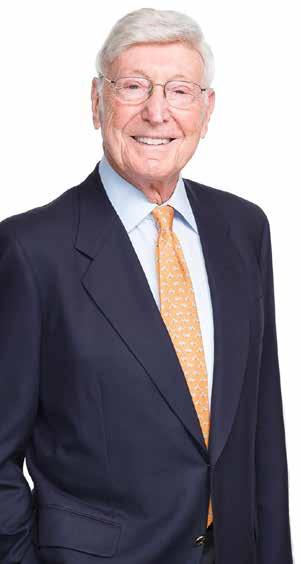













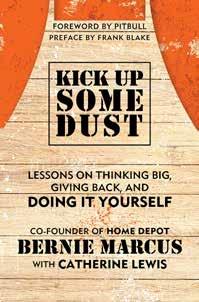



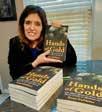
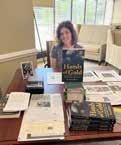






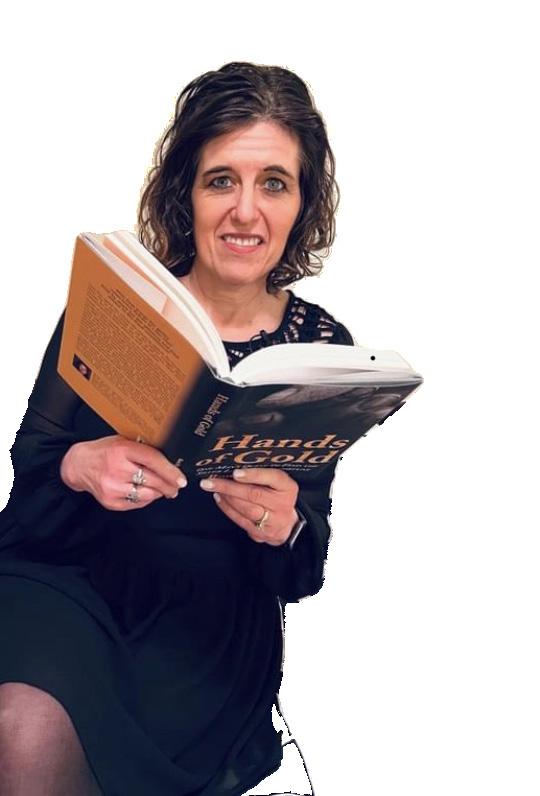

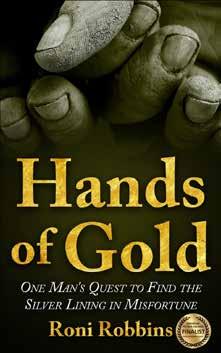
Photographer Paul Hagedorn grew up in Port Washington, N.Y., on Long Is land, sailing and vacationing on the wa ter with his large family of five siblings. That is, until his hospitalization in Colo
rado at Denver’s National Jewish Health, previously called Children’s Asthma Re search Institute and Hospital, where he spent 18 months.
Fast forward to Oct. 13. Hagedorn and his wife, Julie, sponsored a fashion event and cocktail reception at the Saks


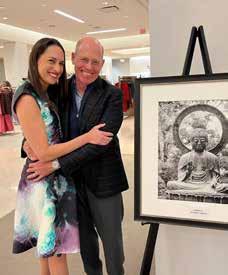
Fifth Avenue clubhouse level, as part of their efforts to raise awareness and funds for the very same hospital.
Hagedorn said, “Asthma is no joke. Growing up in an old farmhouse in New York with dogs, dust mites, mold, and a mom who smoked, I was being hospi talized frequently due to uncontrolled asthma attacks. Luckily, in fourth grade, I was brought to National Jewish Health in Denver. My parents took us to Disney land in California and dropped me off for a year-and-a-half stay.”
When quizzed how an eight-year-old child could deal with what some might call abandonment, Hagedorn said, “They [my parents] saved my life. They feared I was going to die from asthma. Fortunate ly, they found a specialized center and sent me away for inpatient treatment there. Slowly, I got better. My asthma at tacks were becoming less frequent. The medicines I received in treatment were successful, and my parents no longer had to worry about me dying.”
Paul Hagedorn’s father, Horace Hagedorn, founder of Miracle Gro, showed financial gratitude towards Na tional Jewish Health “beyond measure.” Carrying this forward, Paul Hagedorn has donated over a million dollars in proceeds from sales of his highly soughtafter photography. He said, “As a selftaught fine art photographer, I have leveraged my talent to pursue my philan thropy. With my father as my mentor, I have grown to value the importance of giving back. Two pieces of my personal work have been donated to ‘National Jew ish’ for a drawing at this Saks Fifth Av enue event tonight.”
Note that, as an adult, Hagedorn
was instrumental in the product develop ment, design, and packaging for Miracle Gro, alongside his father. Many of those who count gardening as one of the top hobbies in the U.S. know the brand which is highly ranked and sold from Home De pot to Amazon.

Paul’s wife, Dr. Julie Levine, a re tired physician, related their donations to ongoing important research in fund ing a new study to uncover biological drugs with potential for new asthma treatments. Dr. Levine said, “The study is only nine months in, but there just might be an important relationship, like with atopic dermatitis, that could provide clues to catching asthma early.”
Saks Fifth Avenue marketing di rector Marian Goldberg greeted guests who were enchanted by the music of The Juilliard School violinist Richmond Punch. Tall, sleek models glided amidst champagne flutes, mojitos, pastel mixed concoctions, and hors d’oeuvres, and posed alongside Hagedorn’s photos. Bert Levy, an attorney at Arnall Golden Gregory (AGG), who chairs the Midtown legal firm’s art committee and serves on the board of Atlanta’s High Museum of Art, has an eye for fine photography. Levy said, “Paul has been a friend for a long time. I admire his vision for seeing the extraordinary in the ordinary.”
As well as on the AGG firm’s walls, the Levy home displays an unusual Hagedorn photograph of a wall being painted.
Reaching back to his youthful memories of sailing, Hagedorn and his wife, Julie, continue to spend time vaca tioning on their 75-foot yacht based in Florida. ì

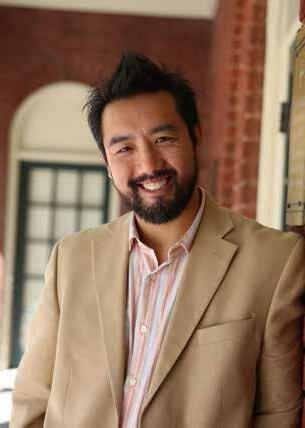
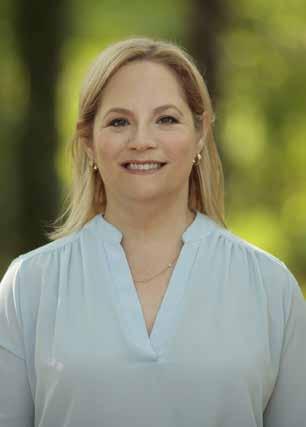



Multiple surveys have found that Jews vote in percentages higher than the population in general, which — in some places and in some races — can make the Jewish vote more influential.
Jews make up an estimated 1.2 per cent of Georgia’s population. Before the redistricting that followed the 2020 Cen sus, 68 percent of Jewish adults in Geor gia lived in congressional districts within metro Atlanta, according to the Ameri can Jewish Population Project (AJPP). Be fore redistricting, the sixth district was estimated to have the largest percentage of Jewish adults (4.8 percent), followed by the fifth (3.0 percent), 11th (2.1 percent), seventh (2.2 percent), and fourth (1 per cent). Post-redistricting estimates were not available.
AJPP reported that an estimated 58 percent of Jewish adults in Georgia have a college degree, more than twice the rate in the state’s adult population. The Jewish electorate is older than the state’s adult population in general, with 29 percent
being age 65 or older, compared with 19 percent for the state in general.
According to the AJPP data, 53 per cent of Jewish adults identified as Demo crats or leaning toward the Democrats, compared with 47 percent statewide. At the same time, 38 percent identified as Republican or leaning Republican, com pared with 46 percent statewide.
In terms of political orientation, 36 percent of Jewish adults identify as libe ral, compared with 21 percent statewide; 38 percent as moderate, compared with 36 percent statewide; and 21 percent conservative, compared with 43 percent statewide.
Younger Jewish adults, ages 18-24, were more likely to identify as indepen dent than those age 65 and older, with 45 percent of the younger group identifying as independent, compared with 30 per cent of the elders.
A Jewish Electorate Institute survey of 800 self-identified registered Jewish vot ers, conducted online from Aug. 25 to Sept. 1, asked which two issues would influence their vote for Congress in November. The


future of democracy (45 percent), abortion (38 percent), and jobs and the economy (28 percent) topped the list of 11 issues. Israel tied for ninth (7 percent).
By comparison with the public in general, inflation (43 percent) topped a Quinnipiac poll of 1,157 likely Georgia voters conducted Oct. 7 to Oct. 10, fol lowed by abortion (14 percent), election laws (11 percent), and gun violence (10
percent). Inflation (73 percent) topped the list for Republicans, with no other issue in double digits. Democrats ranked abor tion first (27 percent), followed by elec tion laws (17 percent), gun violence (13 percent), health care (12 percent), and in flation (12 percent). Independents placed inflation (42 percent) first, followed by election laws (14 percent) and abortion (13 percent). ì
Mindful of Georgia’s headline-making role two years ago — when Georgia shocked the nation by backing Democrat Joe Biden over incumbent Republican President Don ald Trump and by unseating two Republican senators — a spotlight continues to shine on the state.
In advance of the Nov. 8 midterm elec tions, the national media has joined the swarm of local reporters who eat, breathe, and sleep Georgia politics.
Much of the attention has been focused on the races for U.S. Senate, governor, and secretary of state, as well as the potential impact of changes made to the state’s voting rules and procedures in the wake of disprov en claims of widespread fraud after the 2020 election.

Because Georgia election law requires that the winner receive a majority of the votes cast, the presence of Libertarian candi dates in several races could force runoffs on Dec. 6.
Nothing less than control of the U.S. Sen ate may be at stake as incumbent Democrat Raphael Warnock seeks a full six-year term. Polls suggest that he is in a close race against Republican Herschel Walker, the Heisman
Trophy-winning running back on University of Georgia football teams in the early 1980s. Libertarian Chase Oliver could force a runoff.
The other marquee race features a re match between incumbent Republican Gov. Brian Kemp and Democrat Stacey Abrams, whom Kemp narrowly defeated in 2018. Re cent polls have shown Kemp with a lead of several percentage points over Abrams. If the margin is again close, Libertarian candidate Shane Hazel also is on the ballot.
In another contest of note, incumbent Republican Secretary of State Brad Raffens perger, like Kemp the target of Trump’s ire for refusing to overturn the 2020 results, is being challenged by Democratic state Rep. Bee Nguyen and Libertarian Ted Metz.
A staggering amount of money — more than $360 million, according to the Atlanta Journal-Constitution — has been spent in Georgia this election cycle by candidates and allied groups, with two-thirds going to the television, radio, and online advertising that seems difficult to avoid.
Following the 2020 election — and de spite claims of widespread fraud rejected by Raffensperger, the state’s chief elections of ficial — the Republican-controlled General Assembly passed, and Kemp signed into law changes to the state’s voting rules and proce
dures.
A formula of one ballot drop box per 100,000 voters has reduced the number of drop boxes, particularly in metro Atlanta, and access to drop boxes has been limited by requirements for placement and hours. The rules on eligibility for absentee ballots (made widely available in 2020 in response to the COVID-19 pandemic) have been tightened. And the distribution of refreshments and food to voters waiting in line to cast their bal lots is prohibited.
In advance of the election, counties across the state have warned of a shortage of poll workers. During the COVID-19 pandem ic, older citizens shied away from the job, and harassment of poll workers after the 2020 election has kept others from volunteering for the job.
The state’s estimated population has reached 10.8 million. There are nearly 7.8 mil lion registered voters in Georgia, compared with 6.9 million in 2018, and the composition of the electorate continues to change. The At lanta Journal Constitution (AJC) reported that 20 percent of registered voters — nearly 1.6 million — have been added to the rolls since the 2018 election and that more than half of those new voters are under the age of 35.
Analysis by the AJC found that the num
It is difficult to know which Georgia Republican has irritated former President Donald Trump more, Gov. Bri an Kemp or Secretary of State Brad Raffensperger.
Possibly the latter. It was Raffensperger who demurred when Trump asked him to “just find me 11,800” votes, to overturn Democrat Joe Biden winning Georgia’s 2020 presidential vote, in a now infamous Jan. 2, 2021, phone call.
The Secretary of State’s portfolio also includes licensure and regulation of nu merous professions, but it is the role of elec tion overseer that has put a spotlight on a job that, until 2020, received far less than its current media attention.
Raffensperger was elected in 2018 and is seeking a second term. He is opposed by Democratic state Sen. Bee Nguyen and Lib ertarian Ted Metz.
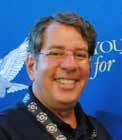
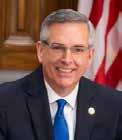
Georgia law requires that the win ner of an election receive a majority of the votes cast. A survey of 1,076 likely voters, conducted for 11Alive News between Sept.
30 to Oct. 4, found Raffensperger with 39 percent, Nguyen 36 percent, “other” 7 percent, and 18 per cent undecided. A runoff, if necessary, would be held Dec. 6.
In the May 24 Republican primary, Raffensperger com fortably defeated a field that included Trump-backed U.S. Rep. Jody Hice. Nguyen topped a five-candidate primary field, then defeated Dee DawkinsHaigler in a June 21 runoff.
Speaking to a mid-Sep tember gathering of the Atlan ta chapter of the Republican Jewish Coalition, Raffensperg er said that the 2022 midterm election would be conducted in a fair and open fashion and that the results would be reli able. He defended changes made to the state’s election rules and procedures by the Republicancontrolled General Assembly following the 2020 election.
During an Oct. 18 debate sponsored by the Atlanta Press Club, Raffensperger said:
“I’ve had to stand up to incredible pressure. “I’m standing up for you, the voter. I’m standing up for the Constitution, and I’m standing up for the rule of law.”
Nguyen, the first Viet namese American elected to the Georgia House, has repre sented state House district 89 (succeeding Democratic gu bernatorial candidate Stacey Abrams) since January 2017. “My parents fled their country in the middle of the night on a boat in search of basic civil lib erties, including the freedom of speech, the freedom of press, and the right to free and fair elections,” she said during the debate. “And right now, our ba sic rights are under attack, in cluding the freedom to choose and the freedom to vote.”
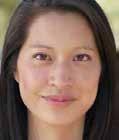
Nguyen has opposed the changes made to Georgia’s voting proce dures and rules in the wake of the 2020 election. “Here’s the thing about Brad Raffensperger. He wants to present himself to Georgia voters as a person who stood up
ber of Hispanic voters has increased by 49 percent since 2018 and now represents four percent of the total registered voters, while the number of Asian American voters has increased by 43 percent since 2018 and now accounts for three percent of registered vot ers. The percentage of white voters declined from 54 percent in 2018 to 52 percent in 2022. The number of African Americans registered to vote held steady at 30 percent.
The deadline to register to vote passed on Oct. 11. Early voting began Oct. 17 (136,000 ballots were cast on the day alone and more than 750,000-plus by Oct. 24) and ends Nov.
4. The deadline to apply for an absentee bal lot passed on Oct. 28. Absentee ballots must be received by Nov. 8 to be counted. The polls will open at 7 a.m. on Nov. 8 and will close at 7 p.m., barring circumstances that require go ing past that time. ì
against Donald Trump,” she told GPB News. “But the reality is following the law is the bare minimum and expected out of any elected of ficial who took the oath of of fice.”
Other planks in her plat form include supporting pub lic education and criminal jus tice reform and strengthening consumer protection laws.
Metz favors eliminating Georgia’s electronic voting ma chines, instead advocating the use of paper ballots, and supports signature matching for absentee ballots. He also opposes the use of ballot drop boxes. During the debate, he said that the 2020 election was “so obvi ously corrupted.”
According to the most recent available information from the Georgia Campaign Finance System, Nguyen had received $3.2 million in contributions, spent nearly $2 million, and had nearly $1.2 million in cash available. Raffensperger had received nearly $2.8 million, spent nearly $2.4 mil lion, and had $416,000 remaining in cash available. Metz had raised nearly $15,400 and spent just about that amount. ì
Republican Brian Kemp won the keys to the governor’s mansion in 2018, narrowly defeating former Democratic state House minority leader Stacey Abrams, 50.2 percent to 48.8 percent.
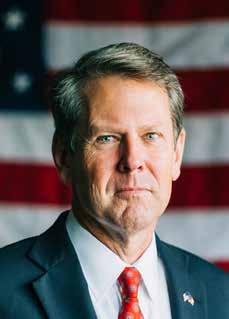
Kemp is betting that in 2022 the state’s economic health will win him a second term, while Abrams wagers that such issues as abortion and health care will resonate with voters.
Georgia law requires that the winner of an election receive the majority of the votes cast. If the race is close, votes received by Libertarian Shane Hazel could force a Dec. 6 runoff. Polls conducted in October placed Kemp ahead of Abrams, on average by sev eral percentage points.
The state’s economy has been buoyed by a low unemployment rate, a boost in tax collections, and $4.8 billion that Georgia re ceived from the $1.9 trillion American Rescue Plan — a measure that congressional Demo crats passed without Republican support and that Kemp derided.
Kemp and Abrams have offered plans to take advantage of the state’s $6.57 billion
budget surplus in fiscal 2022.
Kemp has proposed a $1 billion income tax refund and $1 billion in property tax re lief. Both would require approval when the General Assembly, where Republicans cur rently hold House and Senate majorities, re convenes in January 2023.
Georgia law gives the governor author ity to distribute the federal COVID-19 funds. The Atlanta Journal-Constitution reported in mid-October that Kemp had allocated all but $150 million of the $4.8 billion. His plans in cluded spending $1.2 billion in federal aid to support some three million Georgians who benefit from Medicaid, the federal health insurance program for low-income individu als and families, and people served by other state and federal assistance programs.

Georgia is one of a dozen states that does not fully fund Medicaid through the Affordable Care Act. Advocates for expan sion say that 14.5 percent of Georgians are without health insurance, tied for second worst among the states. Kemp has been at odds with the Biden administration, which has blocked the governor’s plan for a limited expansion of Medicaid (serving about 50,000 people) for those willing to meet such condi
tions as a work requirement.
Kemp also announced plans to spend federal funds on increased police pay, broad band internet, sewer projects, and at Grady Memorial Hospital, in the wake of the an nounced closing of the Wellstar Atlanta Medical Center.
Georgia’s unemployment rate for Au gust was measured at 2.8 percent. Kemp fre quently touts job development, such as plans announced by Rivian and Hyundai to site electric vehicle manufacturing plants in the state, generating a potential 15,000 jobs.
Abrams has proposed a $1 billion in come tax rebate, limited to families with household incomes of less than $250,000 a year. She proposes spending $1.9 billion of the surplus to fully expand Medicaid (providing coverage to upwards of 400,000 uninsured Georgians) and to boost pay for teachers and police. Abrams favors spending more to aid technical college programs, small businesses, and rural Georgia, which has suffered a spate of hospital closings.
Abrams has backed casino gambling as a way to support the state’s popular HOPE scholarship fund, an initiative that would require voter approval of a constitutional amendment.
In response to the June ruling by the U.S. Supreme Court that there is no constitutional right to abortion, Abrams has made abortion rights a key plank in her campaign. Georgia’s current abortion law, which Kemp signed in 2019, prohibits abortions after six weeks of pregnancy, which can be before a woman knows that she is pregnant. The state previ ously allowed abortions up to 20 weeks. The current law includes exceptions if the health of the mother is endangered, or in cases of rape or incest, if a police report has been filed.
Kemp has defended and Abrams has opposed changes made to voting rules and procedures by the Republican-controlled leg islature in the wake of the 2020 presidential election and disproven allegations of wide spread fraud.
Speaking to the Republican Jewish Co alition in September, Kemp boasted that Georgia holds $25 million in Israel bonds. He also lauded the state’s anti-BDS (Boycott, Divestment and Sanctions) law. A federal dis trict judge has said that the law violates free speech provisions of the Constitution, but the state has appealed to the federal Court of Ap peals. The BDS movement seeks to employ economic pressure to force a change in Is raeli policies regarding the Palestinian Arabs.
Abrams has stated opposition to the BDS movement, though she voted in 2016 against the state’s initial anti-BDS law (which was amended in 2022), on grounds that banning boycotts is unconstitutional, not ing their effectiveness in the American civil rights movement.
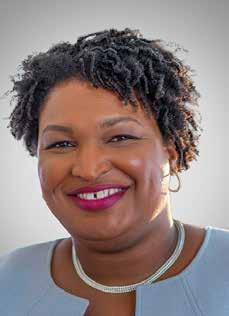
Abrams opposes using tax credits and vouchers to support private schools, con tending that such programs take funding away from public schools. The state’s Stu dent Scholarship Organization has proven a popular means of aiding Jewish day schools. In 2022, the state provided $100 million in tax credits to those making qualified dona tions to private school scholarships. In April, Kemp signed legislation that would increase that pool of tax credits to $120 million.
According to the most recent data post ed by the Georgia Campaign Finance System, Abrams had raised $36.7 million and spent $37.3 million. Kemp had received $38.9 mil lion in contributions, spent $27.7 million, and had $11.1 million available. ì
Republican Attorney Gen eral Chris Carr is being chal lenged by Democratic state Sen. Jen Jordan and Libertarian Martin Cowen — all three Uni versity of Georgia Law School graduates — in a contest that has centered on hot-button is sues.
A survey of 1,076 likely voters, conducted for 11Alive News between Sept. 30 to Oct. 4, found Carr with 40 percent, Jordan 36 percent, “other” with 4 percent, and 20 percent undecided. A run off, if necessary, would be held Dec. 6.
riages, as she denounced the “heartbeat” bill during debate in the Republican-controlled legislature in 2019. That mea sure cuts off access to abortion after the sixth week of preg nancy, when women may not be aware that they are preg nant.
Georgia Republican Attorney General Chris Carr is seeking re-election in this year’s midterms.
The ruling by the U.S. Supreme Court that abortion is not a right protected under the Constitution added one more issue to a list that already included changes made to the state’s voting rules and pro cedures, laws permitting con cealed and open carry of guns, crime, and the “heartbeat” abortion law.
Carr was appointed to the post in 2016 by then-Gov. Na than Deal and won a full fouryear term in 2018. To a lesser degree than fellow Republicans Gov. Brian Kemp and Secretary of State Brad Raffensperger, Carr drew the ire of former President Donald Trump for not interven ing to reverse the results of Georgia’s 2020 presidential vote, which went to Democrat Joe Biden by a margin of about 12,000 votes.
Carr handily defeated a Trumpbacked candidate in the Repub lican primary.
As attorney general, Carr has backed the state’s positions on the voting, abortion, and gun laws, as well as policies that kept Georgia’s economy open during the COVID-19 pan demic. He has touted efforts to combat fraud, the creation of a human trafficking prosecution unit, and a gang prosecution unit that recently issued indict ments against 13 people.
She has warned that un der Georgia law — which as signs personhood status to a fetus — women could be pros ecuted for having an abortion. Carr has maintained that the law is aimed at doctors, not patients. “There is absolutely nothing in the statute that would say a preg nant woman would be prosecuted,” he said during an Oct. 18 debate sponsored by the Atlanta Press Club.
Jordan has said that she would not spend state funds to prosecute under that law. “I would challenge it in court,” Jordan said during the debate. “My primary obligation is to enforce the state’s constitution —when there is a conflict be tween the two, the constitution controls.”
Libertarian Martin Cowen is running against Chris Carr and Jen Jordan for the Georgia Attorney General position.
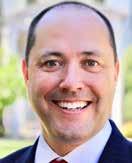
Carr has ridiculed Jor dan’s position, saying that the attorney general cannot pick and choose which laws to fol low. “The attorney general can not sue the state of Georgia. It defends the state of Georgia,” Carr said dur ing the debate.
Cowen, too, has said he would not pros ecute cases under the abortion law. The Lib ertarian supports eliminating qualified immunity for gov ernment employees, including police officers, and opposes the use of so-called “no knock” warrants. The veteran attorney sued the state in 2017 over rules that make it difficult for a thirdparty candidate to receive bal lot recognition in U.S. House races.
Democratic state Sen. Jen Jordan is challenging incumbent Georgia Republican Attorney General Chris Carr.
Jordan, who easily won the Democratic primary, lists as her campaign priorities pro tecting voting rights, ensuring clean air and water, access to health care and insurance industry accountability, and stopping preda tory lending practices. Jordan delivered an emotional speech, talking about her miscar
According to the most recent data from the Georgia Campaign Finance Commis sion, Carr reported receiving $4.3 million in campaign contributions, ex penditures totaling $3.2 million, and had $1.1 million cash available. Jordan reported rais ing more than $3.1 million, spending nearly $1.7 million, and having $1.4 million avail able. Cowen reported raising $2,800, spend ing $2,500, leaving $289 in cash available. ì
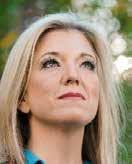
• Founding member of the new Georgia-Israel Legislative Caucus
•
Longtime House liaison to the Georgia Holocaust Commission

• Co-sponsor of House Bill 1275 designed to define and fight discrimination against Jewish citizens in Georgia
• Past recipient of the Cobb Community Service Award from the Chabad of Cobb for her tireless efforts to improve life in East Cobb

“I served with Sharon Cooper in the legislature and found her to be a tough but compassionate conservative -- just what our district needs. I enthusiastically support her for re-election”
- State Rep. Mitchell Kaye
In the 246-year-history of the United States of America, just 11 African Americans have served in the U.S. Senate.
The most recently elected was Georgia Democrat Raphael Warnock, winner of a Jan. 5, 2021, runoff against appointed Republican Sen. Kelley Loeffler. Warnock was elected to serve the final two years in the term of the late Republican Sen. Johnny Isakson, who stepped down in December 2019 because of ill health.
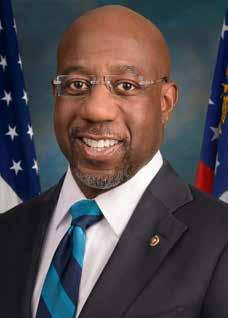
Warnock, who has maintained his po sition as senior pastor of Ebenezer Baptist Church in Atlanta, is seeking a full six-year term in the Senate. His chief opponent is Re publican Herschel Walker, also an African American, best known to many Georgians as the Heisman Trophy-winning running back on the University of Georgia football teams of the early 1980s.
Georgia may determine — again — which party controls the Senate. Following the election of Warnock and fellow Georgia Democrat Jon Ossoff (who defeated incum bent Republican Sen. Davie Perdue in a run off), the Senate was divided 50-50, with Dem ocratic Vice President Kamala Harris holding the tie-breaking vote.
The race could hinge on votes received by Libertarian candidate Chase Oliver. Geor gia law requires that the winner receive a majority of the votes cast. Polls conducted during October showed Warnock leading, but most were within the survey's margin of error, and only one out of eight gave him more than 50 percent. A runoff would be held Dec. 6.

Walker has been a vocal supporter of former President Donald Trump, who owned the New Jersey Generals of the now defunct (1983-85) United States Football League and signed the UGA star, then in his junior year, to a contract in 1984.
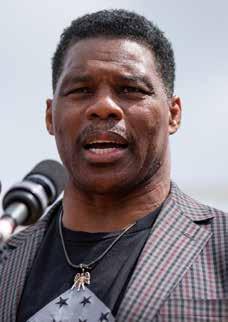
Throughout the campaign, questions
have been raised about the veracity of state ments made by Walker, including details of his business ventures and resume. Sup porters of both candidates have pointed to personal controversies of the other, whether it be Walker’s mental health issues, threats against women, and abortion-related allega tions, or Warnock’s divorce and rental hous ing owned by the church.
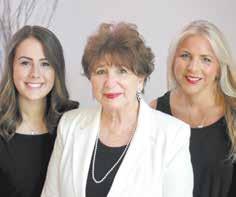
Walker’s campaign has sought to tie Warnock to what Republicans view as failed policies of the Biden administration. Ac cording to the website FiveThirtyEight.Com, through August, 96 percent of the votes cast by Warnock were aligned with positions taken by the Biden administration.
Speaking in August to the Atlanta chapter of the Republican Jewish Coalition, Walker expressed opposition to any revival of the 2015 Iran nuclear deal, from which Trump withdrew the United States in 2018. He criticized Warnock for not speaking out against the Iran deal. “That’s what I don’t get. You’re going to give money to terrorists to be
nice to you? He never read the definition of a terrorist, has he? They don’t like you. They like nothing about you,” Walker said.
Also at that event, Walker criticized the Inflation Reduction Act passed by Democrats in Congress, particularly provisions dealing with climate change. Walker reportedly told the audience that “a lot of the money goes to trees,” adding, “Don’t we have enough trees around here?”
Noting the large number of Jewish re cipients of Nobel Prizes, Walker told the RJC gathering, “God’s people do big things.”

Warnock has long-standing ties to At lanta’s Jewish community, including through joint services and social justice projects in conjunction with The Temple. Speaking in October at a gathering sponsored by three Jewish groups, he preached on such issues as defending democracy and voting rights, protecting abortion rights, expanding health care access and affordability, and investing in infrastructure.
The senator did not mention Israel un
til he spoke with reporters after the event. When the AJT asked about his omission of a subject that usually receives at least passing attention when candidates appeal to Jewish groups, Warnock said: “My commitment to Israel, its right to exist, and the importance of having a strong and secure Israel that is at peace with its neighbors, is well established.
A lot of the people in this audience have worked with me on that issue, and I look forward to continuing to work with them on this issue.”
According to the most recently avail able data from the Federal Election Commis sion, Warnock had raised $111.3 million since December 2020 (the most by any candidate for federal office this campaign cycle), spent $120.2 million in that period, and had $13.8 million cash on hand. Walker had raised $31.8 million since March 2021, spent $24.5 million in that period, and had $7.3 million cash on hand. Oliver reported raising $7,700, spending $2,600, and had $345 cash avail able. ì
The redistricting that followed the 2020 Census put Republicans in position to add one more seat to its current 8-to-6 advantage over Democrats in Georgia’s congressional delegation.
Even if Democratic Rep. Sanford Bishop holds onto his seat in southwest Georgia’s 2nd district, Republicans are favored to pick up a ninth seat, reclaiming the 6th district.
In the redistricting that followed the 2020 Census, the Republican-controlled Gen eral Assembly redrew the 6th to once again be Republican-friendly and the 7th district to favor Democrats. That prompted current Democratic Rep. Lucy McBath to jump from the 6th into the 7th, where she defeated cur rent Democratic Rep. Carolyn Bourdeaux in the May 24 primary.
Republicans are poised to regain the 6th — which the party had held for 40 years be fore McBath’s 2018 victory — as Republican Rich McCormick faces Democrat Bob Chris tian. Democrats expect McBath to keep the 7th in their column. The gun control crusad
er faces Republican Mark Gonsalves, winner of the GOP primary, and Republican write-in candidate Lisa Babbage. McBath and McCor mick have raised significantly more money than their opponents.
In two heavily Democratic metro Atlan ta districts, Rep. Hank Johnson is looking to win a ninth term from the 4th district against Republican challenger Jonathan Chavez, while Democratic Rep. Nikema Williams seeks a second term from the 5th district against Republican Christian Zimm.
In other metro Atlanta races, Republi can Rep. Barry Loudermilk is seeking a fifth term in the 11th district against Democrat challenger Antonio Daza. In the 13th, Demo cratic Rep. David Scott is running for an 11th term against Republican challenger Caesar Gonzales.
The Georgia congressional race gar nering the most national attention is in the historically conservative 14th district, where Republican Rep. Marjorie Taylor Greene is seeking a second term. She is being chal lenged by Democrat Marcus Flowers. Ac cording to the most recently available data
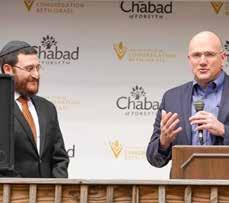 By Dave Schechter
By Dave Schechter
The sometimes-acerbic race in Georgia House District 51 between Jewish Democrat Esther Panitch against Jewish Republican Peter Korman assures the presence of at least one Jewish legislator when the General Assembly reconvenes in January.
Jews comprise an estimated 1.2 percent of Georgia’s nearly 10.8 million residents. Even by that measure, they are under-rep resented in the 236-seat state legislature (56 in the Senate and 180 in the House). Among current Jewish legislators, Democrat Mike Wilensky of Dunwoody opted not to seek a third term in House district 79.
Incumbent Republican Todd Jones is seeking a fourth term in House district 25, opposed by Democrat Craig Meyer. The district is comprised of southeast Forsyth County and, after redistricting, also a piece of northern Fulton County. Jones, whose mother is Jewish, has a close relationship with Congregation Beth Israel, part of Chabad of Forsyth County.
In House district 45, Jewish Republican Mitchell Kaye, who was elected in May to serve as interim representative, is not seek ing election to a full two-year term from the Cobb County district. (Kaye previously served in the House from 1993 to 2003.)
Among Jewish hopefuls, Democrat Jeff Auerbach, a visiting assistant professor of
political science at Emory University-Ox ford, is seeking to represent House district 121, in Athens and Oconee. His opponent, Republican Rep. Marcus Wiedower, repre sented district 119 before the redistricting that followed the 2020 Census.
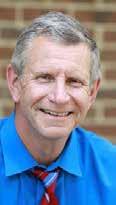
According to his website, Auerbach’s priorities include ending so-called “benefit cliffs,” in which an increase in income can cause people to lose access to government assistance, such as Women, Infant, and Children (WIC) nutritional aid and Peach Care for Kids. Other issues listed include expanding Medicaid, assuring the rights of unwed fathers, enacting reassurance pro grams to lower health insurance premiums, and working with state and federal agricul ture departments to allow the sale of feral hog meat.
District 51 takes in most of Roswell, northeast Sandy Springs, and a section of Johns Creek. Panitch won the Democratic primary. Korman ran unopposed on the Republican side. The two have sparred on social media, primarily on Twitter.
The district 51 seat opened when in cumbent Democratic Rep. Josh McLaurin opted to run for the state Senate. McLaurin defeated Jewish Republican Alex Kaufman in 2018 and 2020.
Korman, 61, grew up in Roslyn, N.Y., on Long Island. He and his wife, Stefanie, were members of Temple Emanu-El, a reform
from the Federal Election Commission, Flow ers had raised $14.4 million and spent $13.1 million, while Greene’s contributions totaled $11.6 million and her spending $9.7 million.
Greene has been an outspoken backer of disproven claims by former President Donald Trump that he, rather than President Joe Biden, won the 2020 presidential vote in Georgia and nationally. Her attacks on Biden and other Democrats have won her fans on the right and brought scorn from the left. She has been rebuked by the national Republican Jewish Coalition and numerous other Jewish groups for antisemitic statements.
Greene’s controversial statements in cluded this about the Republican Party: “We need to be the party of nationalism and I’m a Christian, and I say it proudly, we should be Christian nationalists,” she said in an in terview with the conservative Next News Network while attending this past summer’s Turning Point USA Student Action Summit in Florida.
She doubled down on her rhetoric dur ing the Oct. 16 debate sponsored by the At lanta Press Club: “I stand by the words that
 Republican Rep. Marjorie Taylor
Republican Rep. Marjorie Taylor
Greene is seeking a second term in Georgia’s 14th congressional district.
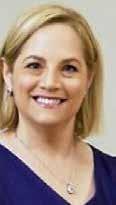
I say. They’re just offensive to Washington, D.C., and the swamp creatures there because the words that I speak are the same as Ameri cans back home — the same as people in Georgia’s 14th district, and the words I speak are the truth.”
The track record over the past several decades is that more than 90 percent of U.S. House members win re-election. ì
congregation in Atlanta. An introduction in 2008 to Rabbi Hirshy Minkowicz of Chabad of North Fulton prompted a shift to “this caring community,” Korman said.
Panitch, 50, grew up in North Miami Beach, Fla. She and her husband, Roger, are members of Congregation B’nai Torah, where he has served as congregation presi dent.
In discussing her priorities, Panitch told the AJT in July that democracy must be supported by rejecting lies about the 2020 election and the failed attempts to replace Georgia’s electors. In the wake of the Su preme Court ruling against a constitutional right to abortion, she cited the defense of
personal privacy in such matters as abor tion, gay rights, and same-sex marriage. She also pointed to infrastructure as an impor tant issue for district 51.
Economic concerns topped Korman’s list, particularly the impact of housing costs on young homebuyers and senior citizens.
Speaking to the AJT in July, he cited public safety and the challenges faced by police dealing with crimes committed by people with mental health issues and those with more predatory intent. Korman also re ferred to “what we’re doing in the class rooms to forward student achievement,” naming education and the curriculum an “umbrella issue.” ì
The duties of Georgia’s lieutenant gov ernor include presiding over the state Senate, overseeing committee assignments and se lecting committee chairs.
Republican Lt. Gov. Geoff Duncan opted not to seek reelection. He rejected former President Donald Trump’s dis proven claims of having won Georgia’s 2020 presidential vote and urged Republicans to look forward to, rather than fixate on, a presidential election loss.

Georgia law requires that the winner of an election receive a majority of the votes cast. The race to succeed Duncan is among those where a Libertarian candidate could force a Dec. 6 runoff. In an Atlanta Jour nal-Constitution poll of 861 likely voters, con ducted Sept. 5-16, Republican state Sen. Burt Jones was backed by 43.4 percent, Democrat Charlie Bailey 33.1 percent, and Libertarian Ryan Graham 7.6 percent, while 15.9 percent remained undecided.
Trump’s endorsements had a mixed re cord in Georgia’s May 24 Republican prima

ry, but Jones was among the winners. Jones, who has represented state Senate district 25 since January 2013, captured 50.7 percent of the vote against three other hopefuls.
Jones was one of 16 “fake electors” that Georgia’s Repub lican Party chair David Schafer organized in a failed effort to cast Georgia’s 2020 Electoral College presidential vote, a scheme that is being investi gated by a Fulton County grand jury.
During a mid-October de bate sponsored by the Atlanta Press Club, Bailey said: “The truth is, Mr. Jones, what you did was un-American and un patriotic. You don’t get to de cide for the people of Georgia who serves them and who is their elected leader. That’s their choice, not yours.”
Jones said that Georgia voters have oth er concerns: “What they are talking to me about is gas prices, 40-year high inflation, crime that’s going on, and then what’s going on in our education system. And that’s what
I’ve been focused on.”
Rather than assigning blame to one party, Graham said: “The truth is this infla tion has been bipartisan,” he said.
Jones’ platform has includ ed eliminating the state income tax — which last year brought in about $20 billion, some 60 percent of the state’s tax re ceipts a year — as well as giving parents more sway in public education decisions, allocating more money to private and charter schools, reducing the cost of college and technical education, and increasing pay and benefits for law enforcement and first re sponders.
Bailey, an attorney and for mer Fulton County gang pros ecutor, defeated former Atlanta city councilman Kwanza Hall in a June 21 runoff after finish ing first among nine candidates in the May 24 Democratic primary. He was unsuccess ful in a 2018 race against Georgia’s current attorney general, Republican Chris Carr. Bailey’s campaign priorities have included
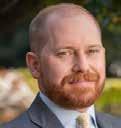
improved pay for police and teachers, reduc ing class size, bringing back free technical college tuition, and expanding Medicaid.

Graham, an information technology project manager, chairs Georgia’s Libertarian Party. His platform rests on “getting government out of the way and letting individuals cre ate solutions.” He opposes man dated school curriculums and government intrusion in what he terms “bodily autonomy and consent.” He favors ending civil asset forfeiture, ending sovereign immunity, and eliminating the state’s medical Certificate of Need, under which the Department of Public Health evaluates plans for new or expanded health care services.
According to the most recent informa tion from the Georgia Campaign Finance System, Jones reported contributions total ing $12.3 million, expenditures of $6.6 mil lion, and $1.9 million cash available. Bailey reported contributions of $2.3 million, ex penditures of $1.1 million, and $656,000 cash available. Graham reported contributions of $8,200, spending of $5,300, and nearly $2,900 available. ì
We graciously thank Governor Brian Kemp for all that he’s done over the past four years as an ally to the Jewish community of Georgia.
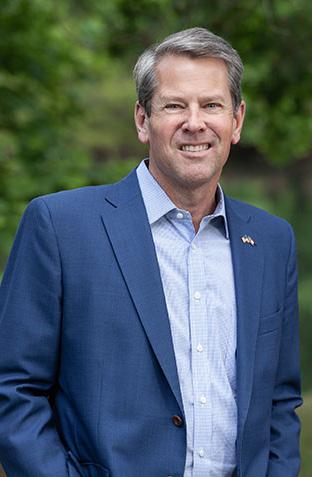
-Expanded the ALEF program to fund Jewish Day Schools -Instituted the largest teacher pay raise in state history
In a second term Governor Kemp has proposed additional measures to ensure that Georgia continues to be the best state in the country to live, work, and raise a family. Remember to get out and VOTE for Governor Kemp!
-Ensured parents have a say in their children's education -Banned divisive concepts in the classrooms -Invested in school safety Paid for by Kemp for Governor, Inc.
Growing up in Manala pan, N.J., At lanta Falcons tight end An thony Firkser focused more of his time on math text books than football play books. He always had a strong bent for quantitative reasoning, thoroughly en joyed his studies in algebra and calculus, and began contemplating a career in business or economics.
David Ostrowsky
“I really enjoy working with num bers, solving problems,” he told the At lanta Jewish Times. “It kind of came more naturally to me.”
And football, you ask? Firkser actu ally didn’t even start playing until he was a sophomore in high school as his moth er, Donna, initially shuddered at the thought of her son being on the receiving end of jarring hits. But Firkser’s body had different ideas. He soon sprouted over six feet and bulked up to 220 pounds — an imposing physique that made him a force on the basketball court…and on the gridiron.
Ultimately, his mother signed off on football and a couple All-Shore first team selections later, backed by 110 receptions and 19 touchdown grabs, Firkser found himself getting wooed by multiple Ivy League schools.
“We recruited the heck out of him,” said Tim Murphy, head football coach at Har vard University, where Anthony ultimately ended up. “We thought he had a chance to be a really good Division-I athlete.”
Indeed, Firkser viewed himself as an athlete, not just a football player.
As Murphy explained, “The kind of glitch in recruiting him was that he wanted to play Division-I basketball and he had a couple of Ivy League offers to play Division-I basketball. And he said, ‘Coach, what happens if I make the bas ketball team here?’ And I said, ‘First of all, I know you’re a really good basketball player, but I don’t think you’ll make the team. I’m not saying that to try to dis suade you. I’m just saying that to be very honest with you.’
“I said, ‘Here’s the deal. If you want to come to Harvard, and I know you’ve got great opportunities at all the top Ivies, and if you make the basketball team, I’ll eat that for four years.’ And to his credit — he didn’t make the team, though I’m
sure he could have been a good player— from then on, his focus was strictly on football, and he became a really great Division-I H-back for us.”
After being tabbed to the All-Ivy League first team as a senior and devel oping a legacy as arguably the greatest possession receiver in school history, Firkser signed with the New York Jets as an undrafted free agent on May 5, 2017. After not making the final cut for the Jets’ 53-man roster, Firkser started studying to become an actuary, a position that would allow him to leverage his applied math ematics degree toward assessing risk and uncertainty as they relate to assets and liability.
However, soon thereafter, other NFL teams viewed Firkser as an asset to their rosters. After enjoying a brief stint with the Kansas City Chiefs, Firkser signed with the Tennessee Titans, with whom he ultimately experienced his first gameday action. After four productive years for Mike Vrabel’s upstart squad, he joined the Falcons this past season and has since become a reliable option for fellow former Titan and current Atlanta quar terback Marcus Mariota.
“It’s been a little bit of a change com
ing to a new team after being on the Ti tans for four years, trying to see where I fit into the offense and where I can help this team out,” acknowledged Firkser a couple days before his Falcons won a pivotal Week 6 matchup against the San Francisco 49ers.

“It’s a bit younger of a team in Atlan ta. It’s good to have young guys around. They’re all excited, they all play hard.”
True. During a Week 2 road game against the defending Super Bowl cham pion Los Angeles Rams, the Falcons found themselves down 31-10 early in the fourth quarter. The stubborn Falcons didn’t go quietly into the SoCal evening, reeling off 17 unanswered points to make it a respectable 31-27 score in favor of the Rams. Ever since, Atlanta has turned its season around and is currently in the mix for the NFC South title.
“I think it was great to see how the team keeps fighting and never gives up,” says Firkser, who off the field has assumed an active role in enlighten ing other NFL players about his Judaic background by being an ambassador for Unity Through Sport, a non-profit that leverages sports to combat societal dis crimination. “Being down by such a large
amount late in the game, a lot of guys can just chalk it up [to playing the defending Super Bowl champs] and take the loss, but we just kept pushing. We know that’s a big value in our team and something we want to keep going week to week after.”
Dethroning Tom Brady and the Bucs in the NFC South is one daunting challenge. But Firkser, as an undersized tight end who has cracked multiple NFL rosters, and, perhaps more impressively, excelled in both academics and athletics at Harvard, remains quite familiar with tackling adversity.

As he noted about his college expe rience: “It’s a little intimidating for sure, being an athlete and knowing how chal lenging the academics can be. I was ex cited for it, and I did my best to make the most of athletics as well as the academics and be able to set myself up for life after college football and now luckily enough, life after the NFL.”
Speaking of other professional en deavors, it’s probably a good thing that Firkser didn’t pursue a career in the insur ance industry. He undoubtedly would have been a successful actuary (and may still become one), but this football gig hasn’t worked out too badly for him either. ì
For Emory University senior tennis captain Stepha nie Shulman, the pandemic has been a mixed blessing. When the country zoomed into lockdown in March 2020, Shulman was in the midst of an impressive rookie season for the Eagles’ women’s tennis team, having com piled a singles record of 7-3 and doubles mark of 6-3. The native of Gates Mills, Ohio, was pursuing her studies in Emory’s Goizueta Business School, involved with Relay for Life, a club that raises money for the American Can cer Society, and making incremental improvements on the court. This was just what Shulman had envisioned a year earlier when she was a senior at the Hawken School in northeast Ohio looking ahead to college.
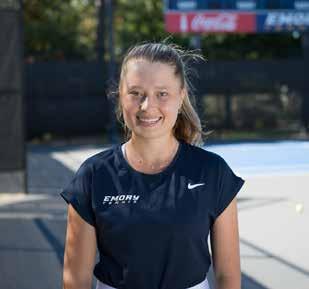

“A few things played into my decision to attend Emory,” said Shulman in an interview with the Atlanta Jewish Times. “Tennis definitely played a big role in it. It is something special to be able to be a part of a team that competes for a national title every year, and I got along well with the coaching staff and girls on the team. Academics were also something really important to me, and Emory’s reputation and business school were a big factor in my decision as well.”
Alas, COVID did happen and like an untold number of collegiate athletes, Shulman had to make the not-soeasy decision for the upcoming 2020-21 academic year: ride out the pandemic at home (and of course miss the tennis season) or enter the great unknown of college life in the era of COVID. Ultimately, she chose the former op tion.
“I chose to stay at home my sophomore year dur ing the pandemic to be closer with my family, which was a tough decision having to step away from being on campus that year,” she reflected. “My coaches back home were really helpful in making sure I was still able to train back in Cleveland, being really accommodat ing with my class schedule. I was hitting every day and working out on my own on the weekends.”
Last fall, she returned to Atlanta for her junior year, on pace to graduate this coming spring. But tennis? Well, thanks to COVID she would have an extra year of eligibility, meaning she can play until spring 2024 — a full year after she receives her diploma. No one is more grateful than Eagles’ head coach Bridget Harding that Shulman is taking advantage of the NCAA ruling.
“Steph has been one of the most impressive play ers to watch in terms of her growth,” Harding remarked about her senior captain who began playing at Em ory during her first year coaching at the Division III school. “She came in as a very talented and strong play er. It took her a little while to come into her own men tally in terms of believing that she was as good as she is.
“I think that she’s been able to embrace the team aspect of what we do. And I think through that, she has found confidence in herself, not only as a player but as a leader. And I think that has translated very well into her game.”
Though she took the aforementioned year off, Shulman’s collegiate career has continued to be on an upward trajectory. A year ago, as a junior, Shulman ripped off a 15-7 singles mark, good for an All-University Athletic Association (UAA) Second Team selection. And this fall, during the team’s slate of tournament matches,
she’s already garnered a UAA Athlete of the Week award by virtue of capturing the ITA Regional singles title in the late September tourney.
“I am really proud of how much I have improved in my tennis game at Emory,” added Shulman, who grew up in a Jewish household in northeast Ohio and received her early education through the Mandel Jewish Com munity Center in Cleveland. “There’s a very clear differ ence in the way that I construct my game and the way I approach matches now, compared to when I got here freshman year.”

An aggressive baseline player equipped with a deadly forehand, Shulman has made great strides with her net game to support the attacks she develops on the baseline. In effect, she has become a more well-round ed player who now has different tools for closing out points.
As Harding noted, Shulman has assumed a promi nent leadership role on the lady Eagles team, one laden with underclassmen in need of direction. From organiz ing team dinners to enhancing team-wide morale, Shul man has been a true asset off the court while emerging as a more demonstrative leader between the white lines.

Emory University Women’s Tennis senior captain Stephanie Shulman has emerged as one of the top female tennis players in the entire UAA and has another year after this to build upon her legacy. // Photo courtesy of Emory Athletics.
possibility), Shulman is committed to playing her fourth and final year of collegiate tennis at Emory before em barking on her next tennis journey.
“I definitely think I’ll still end up playing tennis af ter I graduate. It’s been such a big part of my life. I can’t see it not still being there in the future.” ì

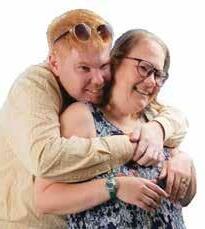

A friend from New York called a couple of weeks ago, asking for my thoughts on the election, particularly the marquee races in Geor gia for gover nor and U.S. Senate.
I gave him an overview of the politi cal climate in the state, with the usual ca veats about the uncertainty of turnout, the possibility of voters splitting their choices between Democratic and Repub lican candidates, the potential for Liber tarian candidates to force runoffs, and a reminder that 35 years living in Georgia has not equipped me with any particular clairvoyance.
In my first professional lifetime, as a newspaper reporter, I would make friendly, low-stakes wagers on election results with the city manager of the mu nicipality I covered. I would like to say otherwise, but I remember paying out more than I took in.
Every election cycle, pundits and politicians tell voters that “this is the most important election in our life times” and that “the future of the nation for decades to come is at stake.”
And they are right. Every election is the most important election…since the last one. The future of the nation and the state are at stake and, yet a significant chunk of the populace shrugs its shoul ders.
In the 2020 general election, 66.8 percent of eligible voters nationally cast ballots, the highest turnout since 1992 and up from 61.4 percent in 2016. In Georgia, turnout in 2020 was 66.2 per cent. That means one-third of eligible voters, nationally and in Georgia, did not vote.
In the last mid-term election, in 2018, national turnout of 53.4 percent was the highest since the U.S. Census Bu reau began collecting turnout statistics in 1978. Georgia’s nearly 61 percent turn out rate in 2018 still meant that two out of every five eligible voters stayed home.
Those who abstain would seem to ignore or reject the admonition by Rabbi Hillel in the Pirkei Avot (Ethics of the Fathers): “Do not separate yourself from the community.”
Never mind telling these folks, “If you don’t vote, don’t complain.” Those
who do not vote will still complain, choosing to exercise their right to sound off more than their right to cast a ballot.
Jews are known to exercise this franchise at a greater rate than the popu lation at large.
In Deuteronomy, we read that, af ter leaving Egypt, Moses told his flock: “God shall choose; one from among thy brethren shalt thou set king over thee.” In 2022, the governed in Georgia will choose their governor (and a U.S. senator and representatives, and state legisla tors, and on down the line).
Think of voting as upholding a so cial contract, providing a service for the public good, while serving yourself. As the Pirkei Avot teaches: “It is not your duty to finish the work, but neither are you at liberty to neglect it.”
One view of that duty is drawn from the Aleinu prayer — tikkun olam, “when all the brokenness in our world is re paired.” Thus, voting becomes a means of fulfilling this admonition from the Book of Isaiah: “Learn to do good. Devote yourselves to justice. Aid the wronged. Uphold the rights of the orphan. Defend the cause of the widow.”
Then there are the words of the Bab ylonian Talmud: “One may only appoint a leader over a community if he consults with the community and they agree to the appointment.” That is why we have elections.
While reading on this subject, I came across a story about the Chazon Ish, a 20th century Israeli rabbi. On Elec tion Day, the Chazon Ish encountered a fellow Jew who had not voted because “I don’t have the three Israeli pounds to pay the poll tax.”
The Chazon Ish asked: “Do you own a pair of tefillin?”

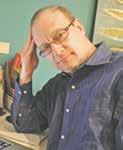
“Of course,” was the reply.
‘Well, go and sell your pair of tefillin and use the funds to pay the poll tax so that you can go and vote,” said the Cha zon Ish.
The Chazon Ish explained later: “I’m not worried that this Jew will not be put ting on tefillin. If need be, he’ll borrow a pair. I am afraid that he won’t perform this other mitzvah…voting in the elec tion.”
This is an important election. The future of the state and the nation is at stake. You have been consulted. So, whether you are a religiously observant Jew or a secular Jew with no interest in religion, whether you call it a mitzvah, a moral obligation, or doing your civic duty — vote. ì

Israeli space development organization SpaceIL plans a double landing on the Moon in 2025, aiming to continue in orbit for five years as a platform for science education ac tivities.

SpaceIL co-founder and deputy CEO Kfir Damari reports that SpaceIL has chosen Beresheet 2’s landing sensors and naviga tion system — vision-based landing sensor algorithms from Lulav Space on a radiationhardened computing platform from Ramon. Space, for the challenging two landings on
both sides of the Moon.
“The timely and consistent process ing of complex algorithms in space make the difference between mission success and failure,” said Avi Shabtai, CEO at Ramon. Space. “After being involved in over 50 space missions to date, an additional Israeli space mission to the Moon is very exciting and we expect our computing platform to be the en gine that will power many more missions to come.”
Another Israeli product to be imple mented in Beresheet 2 is Jupiter-Space tech nology from intelligent video transmission company Maris-Tech to manage camera operation, store and compress images and implement several mission algorithms on both lunar landers. In addition, Swedish space company AAC Clyde Space has been contracted to provide the mission computer for the landers.
“It will execute the flight software, which performs all the mission tasks includ ing communication with Earth, monitoring and handling failures, and management of the automatic landing system,” said Damari. “Meanwhile, our software team is writing the software that will be implemented on the computer. This software will be tested on the development model we’ll get in the next few days.”
Nov. 4, 1995: Yigal Amir, a Jewish West Bank settler and a law student opposed to the Oslo peace process, fatally shoots Israeli Prime Minister Yitzhak Rabin after a peace rally in Tel Aviv.
Founded in 2011, SpaceIL launched its Beresheet 1 mission in 2019, a low-cost lunar program and the first private Moon mission that reached the Moon, although disappointingly it crashed on arrival.
Compiled by AJT Staff
Israeli construction technology startup Buildots won the “Construction Software of the Year” award at the 2022 London Con struction Awards at London Build, the UK’s leading construction and design show.
Buildots also was a finalist in the “Prod uct Innovation of the Year” and “Technologi cal Innovation of the Year” categories.
By collecting data with hardhat-mount ed, 360-degree cameras and processing the data with artificial intelligence (AI), Build ots enables construction teams to make informed decisions that can improve resource efficiency, reduce costly errors, and save time. The technology is currently in use across the UK, Europe, the United States, Middle East, and Asia.
Based in Tel Aviv and London, Buildots
Nov. 8, 1936: Maccabi Tel Aviv Football Club completes an 11-match soccer tour of the United States with a 4-1 loss to an Ameri can all-star team at Yankee Stadium. The tour also includes St. Louis, Boston and Chicago.
Horses used by the Australian 4th Light Horse Brigade rest before the charge on Be’er Sheva on Oct. 31, 1917. // Courtesy of the Australian War Memorial
Oct. 31, 1917: Supported by three Brit ish divisions, the Australian 4th Light Horse Brigade surprises the Turkish defenders and captures Be’er Sheva in a single day, breaking the Ottoman defensive line near Gaza.

Nov. 1, 1965: Prime Minister Levi Eshkol, picked by David Ben-Gurion to be his succes sor in 1963, retains his office in the election for the sixth Knesset as the Alignment, a merger of Eshkol’s Mapai and Ahdut Ha’Avoda, wins 45 of the 120 seats.
Nov. 2, 1917: British Foreign Secretary Arthur Balfour reveals his government’s en dorsement of “the establishment in Palestine of a Jewish national home” in the Balfour Declaration, a letter to Zionist leader Lord Rothschild.
Nov. 3, 1840: A coalition of Austrian, British and Ottoman forces bombards the port city of Acre and drives out the Egyptian garrison, killing more than 1,100 men, during the Second Egyptian-Ottoman War.
Nov. 5, 1933: Judah Magnes, the presi dent of the Hebrew University of Jerusalem, opens the academic year by outlining a plan for the university’s expansion, including the hiring of 14 professors who have lost their jobs in Nazi Germany.
Nov. 6, 1884: Delegates gather in Ka towice — now in Poland, then part of Prus sia — for the first conference of the rap idly spreading Hovevei Zion (Lovers of Zion) movement, almost 13 years before the First Zionist Congress.
Nov. 9, 1952: Chaim Weizmann, the first president of Israel, dies at his Rehovot home after a yearlong illness. A native of Poland, he moved to England in 1904. He developed political friendships that contributed to the Balfour Declaration.
Nov. 10, 2004: The Knesset officially adopts “Hatikvah” (“The Hope”) as Israel’s na tional anthem. The action has been delayed for decades over concerns that non-Jewish Israelis feel excluded by the Zionist lyrics.
Israeli construction technology startup Buildots won the “Construction Software of the Year” award at the 2022 London Construction Awards.
previously was named one of LinkedIn’s Top Israeli Startups for 2021 and 2022, and recently completed a $60 million Series C funding round, reaching $106 million in total funding.
“In continually striving to enable bet ter building, we’re honored to receive this recognition as we lead the way in using technology to finally bring greater efficiency and transparency to the global construction industry,” says Buildots CEO and cofounder Roy Danon.
Compiled by AJT StaffNov. 12, 2000: Leah Rabin, a peace activ ist since the assassination of her husband, Prime Minister Yitzhak Rabin, in 1995, dies at 72 a few days after a mild heart attack. She made aliyah in 1933 and married Rabin in 1948.
Hannah Senesh dresses up as a Hungarian soldier.
Nov. 7, 1944: Hannah Senesh (formerly Szenes), a poet and Haganah paratrooper, is killed by a Hungarian firing squad in Buda pest five months after being captured while trying to cross the border from Yugoslavia.
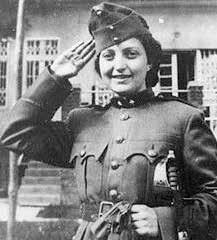
Yisrael Amir died just 10 days short of his 100th birthday. // Israeli Air Force
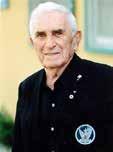
Nov. 11, 1902: Yisrael Amir is born in Vilna in the Russian Empire. He makes ali yah in 1923 and rises through the Haganah. David Ben-Gurion names him the first Israeli Air Force commander in May 1948 though he has no aviation experience.


Reuven Rubin is born in Galatz, Romania. He sells his bicycle in 1912 to afford to travel to Jerusalem and enroll in the Bezalel School of Arts and Crafts. He also studies in Paris.
Nov. 14, 2012: Ahmed Jabbari, the Hamas military chief, is killed in an airstrike on Gaza that marks the start of Operation Pil lar of Defense, which aims to destroy rocket launchers targeting southern Israel.
Items are provided by the Center for Israel Educa tion (israeled.org), where you can find more details.


Between 1949 and 2015, there were 20 elections in Israel to determine the make-up of the 120-seat Knesset, or legislature. Since then, there have been four elections and the fifth will be Nov. 1. Starting in April 2019, Is raeli voters have been called to their polling stations repeatedly and no one will be sur prised if another election will be required in early 2023.
Recent polls are predicting another stalemate, meaning that no grouping of compatible parties is likely to agree to a co alition that would give them at least 61 Knes set seats, enabling them to pass legislation and govern the country. As in the last four elections, the parties are generally split into “for” or “against” a government led by for mer Prime Minister Benjamin Netanyahu, the longest-serving leader in the country’s history. He is also standing trial on several corruption charges including fraud, bribery, and breach of trust, which is why some of his right-wing natural allies refuse to sit in a government led by him.
If this next election results in another deadlock, the current prime minister, Yair Lapid, will continue to lead the country un til another election is held and a majority government is somehow composed. Howev er, if Nov. 1 is indecisive, pundits believe that Netanyahu’s party, Likud, will likely replace him as the party leader, which could prob ably ease the prospect of forming a majority coalition government.
But Netanyahu is not the only contro versial player in the upcoming election. Two members of the Religious Zionism party, Bezalel Smotrich and Itamar Ben-Gvir, who would support a right-wing government led by Netanyahu, have attracted a large per centage of the headlines in Israel as the elec tion campaign heated up.
Ben-Gvir is the leader of the far-right party Otzma Yehudit (Jewish Power, in He brew), one of two parties that joined the Re ligious Zionism party for this election, along with the openly homophobic Noam party. When Ben-Gvir turned 18, he was exempted from the Israel Defense Forces due to his extreme-right political background. Before the last election in March 2021, Netanyahu said Ben-Gvir was “not fit” to be a member of his cabinet because “his positions are not mine.”
This month, Netanyahu reversed him self and announced that Ben-Gvir “certainly can” be a minister if the right wing is able to form a government.
As Israeli journalist Barak Ravid has reported, the increasingly popular Ben-Gvir is causing angst among pro-Israel U.S. politi cians. Sen. Robert Menendez, chairman of
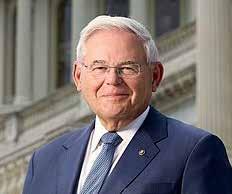
the Senate Foreign Relations Committee, told Netanyahu that he had “serious con cerns” about a coalition including “extrem ist and polarizing individuals like Ben-Gvir.” Ravid reported that Menendez said a gov ernment including Ben-Gvir “could serious ly erode bipartisan support in Washington.”
The same report stated that another “senior U.S. official was very concerned about what impact such a political development could have on U.S.-Israeli relations.”
Congressman Brad Sherman subse quently tweeted that he “urges Israeli po litical leaders from all sides of the political spectrum to ostracize extremists like Itamar Ben-Gvir whose outrageous views run con trary to Israel’s core principals of a demo cratic and Jewish state. These extremists un dermine Israel’s interests and the U.S.-Israel relationships, which I and my colleagues have worked to strengthen.”
But if U.S. congressmen are voicing concern about the composition of the next Israeli government, that is not the case of leading American Jewish organizations.
In 2019, the American Jewish Com mittee (AJC) stated that Otzma Yehudit’s “reprehensible” views should preclude its inclusion in an Israeli coalition govern ment, prompting the American Israel Pub lic Affairs Committee to agree and add that the organization “has a long-standing policy not to meet with members of this racist and reprehensible party.”
Unlike then, both Jewish organizations have remained more circumspect about the possibility of the next elections result ing in a coalition that incorporates Otzma Yehudit. The new CEO of the AJC, former Congressman from Florida, Ted Deutch, told the Times of Israel, “The one thing that I know for sure is that the values of AJC re flect the values of the U.S. and Israel, which is the shared commitment to democracy and inclusion. That’s not going to change,” said Deutch, who joined AJC on Oct. 3. He
Acknowledging the challenges posed by this election, Dov Wilker, regional director of AJC Atlanta, “I really hope that a governing coalition can be put together. The polls are once again showing a tight race for being able to put a coalition together.”
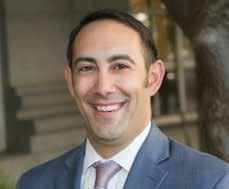
added that AJC would not “inject itself into the middle of the Israeli elections.”
Also taking a broader view of the up coming elections is Dov Wilker, regional director of AJC Atlanta. “I really hope that a governing coalition can be put together. The polls are once again showing a tight race for being able to put a coalition together. One group of parties to pay close attention to are
The American Jewish Committee’s new CEO, Ted Deutch, said AJC would not “inject itself into the middle of the Israeli elections.” In 2019, AJC called the views of Otzma Yehudit party “reprehensible.”
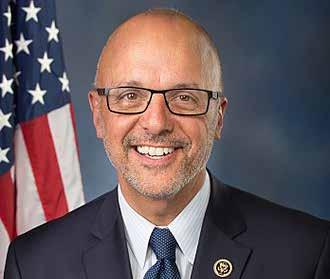
the Arab parties. They have split from a bloc back into separate parties and that could lead to headaches if they are needed for a coalition.”
Israeli voters are likewise probably hoping that somehow a coalition can be cobbled together and that they won’t have to return to voting booths within another few months. ì



news with the community with free AJT simcha
Send
to
Long before Goldie opined the concept of modern romantic love to Tevye in “Fiddler on the Roof,” Jewish couples navigated the oft circuitous marriage road. As an Atlanta Jewish Times tradition, we spotlight some of the city’s most optimistic and fun-loving couples who share how they met and their secrets to longstanding marriage. Our average here is 54 years with Birdie and Josiah Benator marking the top with 75 years of coupling.
With only 35 percent of U.S. marriages surviving the 25year mark, see how these couples enjoy the most sacred of vows. Find out how Jon Winner won $500 worth of burgers expressing his love, and why Steve Koonin believes that dia monds are a girl’s best friend. Stan Sonenshine flipped over Debbie’s tight blouse; and Ramon Franco attributes jogging around the block to maintaining a happy home.

Years Married:
August
Location: Or VeShalom Synagogue
Josiah: When I was 14, living on Pryor Street, Birdie’s parents, whose mother taught Hebrew, asked me to tutor Birdie, who was only 10. Her parents gave me a quarter for each session. We met at this young age, but there was nothing romantic yet. We met again when I was visiting my sister in New York before the beginning of World War II. When I returned from the war, the Office of Veterans’ Services hosted a veterans’ banquet and invited Birdie to join me as my date. Birdie’s mother allowed her to fly all the way from L.A. to be with family and attend the banquet. A few days later, the family threw a party and said that I should marry Birdie. They celebrated our engagement before I even asked her to marry me. It was an arranged engagement!
Birdie: I liked the idea that he was serving his country. He knew how to earn a living and how to keep a family together. During the war, we wrote love letters.
Josiah: Birdie loved to kiss and so did I!
Birdie: Be very thoughtful and patient. Occasionally say “You win” before an ar gument starts.
Josiah: I always say, “Yes dear, whatever you say!” and don’t argue. Whatever she wants to do is what she wants to do.
Years Married: 42 years

November 1979
Location: Shearith Israel
Judy: I was immediately attracted to Steve’s good looks and cleverness and kind ness. I returned from a trip, and he left a poem at my door. That was it! I called my parents, “I’m going to marry him!”
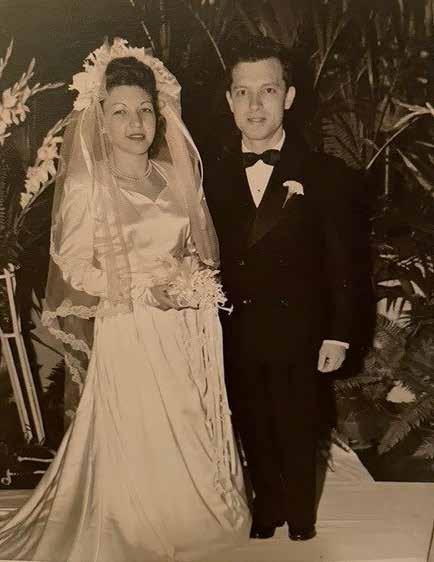
Steve: Attending a Valentine’s Day party at Tempo Horizon. We didn’t formally meet, but we “eyed” each other. I told my friend that she was “too short.” Months later, we met again at the pool; 43 years later, she has been taking care of me, and I have been reaching the higher shelves in the kitchen.
Steve: The little things that we share that make our marriage happy…kids, dog, our travel, our home, our favorite restaurants. Forty-three years is just a beginning, so being happy is a lot more fun than not.
Years Married: 57 years
August 1965
Location: Lincolnwood, Ill. Hyatt House Hotel (suburban Chicago)
Sue: My parents drove me to Iowa City to start the university. The day after they helped me move into the dormitory, I connected with friends who called some guys she knew over to meet us. One of them, Jon, had been giving his fraternity pledges a tour of the “important spots on campus” like girls arriving at the dormitory. Jon asked us to go for a Coca-Cola.
Jon: “If that redhead (Sue) was Jewish, I would marry her in a minute…but she’s not!” I declared. When I saw she was going to the SDT house, I was a little shaken.
Sue: He was considerably more pale as I responded that we were all Jewish. I chased him for four years before we married, so much for “in a minute.” He was then a junior in medical school and I taught school to support us.



Jon: Seeing her for the first time, I was thunderstruck that she could be my mate forever.
Sue: Jon was really cute, red-headed, sweet, and smart.
Sue: We understood that we were a team and faced challenges with love and re spect.
Jon: Humor…the ability to laugh with each other and at ourselves. We learned how to express our feelings and situations we encountered without disrespect.
Sue: Years ago, Jon won a city-wide WSB radio contest, describing love. His defini tion was “an energy force, emanating from the soul, that bonds without limitations.” And that has not changed to this day.
Jon: The prize was $500 worth of Cindy’s Hamburgers which had to be used with in a year. Cindy’s Restaurant did not make it, but Sue and I have!
Years Married: 54 years
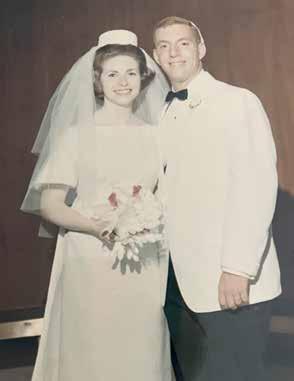
March 1968
Location: Aviva’s aunt and uncle’s home, Franklin Square, Long Island
Aviva: I was the dance instructor and Harry a counselor for 15-year-olds at Sur prise Lake Camp, a Jewish Federation Camp, in Cold Springs, N.Y.
Aviva: Harry was very handsome and mysterious looking. I wanted to get to know him — although he came to camp with his long-time girlfriend.
Harry: I spotted Aviva on the camp bus. She was/is beautiful and unusually poised. I was intrigued by her demure personality and grace while dancing.

Harry: We love Israel and lived there for six years. There, Aviva joined the Bat Sheva Dance Company, and I was on the faculty of Hebrew University in Jerusalem. We’ve visited Israel since many times.
Aviva: We both love traveling. Fell in love with Italy and visited many times. We share many interests. However, any relationship requires constant work and com promise.
Harry: I agree with Aviva. I’m a work in progress.
Years Married: 37 years
June 1985
Location: Shearith Israel. We agreed to have Rabbi Wilson officiate. He left, so Rabbi Judah Mintz was building B’nai Torah and agreed to officiate at Shearith Israel.
Eydie: We met at Boychik’s Deli (now Goldberg’s Dunwoody). Steve has a great sense of humor. Plus, I was so impressed when he picked up the check for the entire table which included my sister and a friend.
Steve: She was cute and fun.
Eydie: Couples either grow together or grow apart, and we are one of the lucky couples who remain more in love today. Never go to bed angry (Steve’s grandmother’s advice). We practice talking through issues.
Steve: Jewelry…and think of the long-lasting Jewish singers, Steve Lawrence and Eydie Gourmet.
Years Married: 49 September 1973


Location: Pensacola, Fla. B’nai Israel Synagogue

Debbie: We met on “Jewford” (ahem, Buford) Highway. My roommate, Marcia Caller (Jaffe) had a date with Stanley, and when he brought her home, she introduced him.
Stanley: Let’s just say that after one date, both Marcia and I knew there would be no second act. She received a phone call which gave her an excuse to leave; it was like “This is my roommate, Debbie Goldenberg, ya’ll get to know each other.” So, we did. Thank you, Marcia!
Debbie: I thought he was cute, smart, and well-dressed. He was an Ivy League graduate. What really won me over were his values and his family. Both of our fami lies were Southern, Jewish, worked hard, and involved in their communities and syna gogues. When I saw how Stanley, his father, and brothers treated their mother, I was sold.
Stanley: Immediate physical attraction, Tight top, short pants, and beautiful green eyes. Checkmate, game over. It became apparent immediately that we liked do ing things together and just being with each other. I did have to pry her away from a boyfriend, but I knew it was worth it.
Debbie: Love, mutual respect and not keeping score. Our family roles have changed from time to time. We both did what was needed and didn’t keep track of who did what. I’m lucky to have a supportive soul mate who isn’t intimidated by a strong woman and encourages me.
Stanley: People talk about having to work at their marriage. Not us. While we are different and complement each other, our goals and values align. We express our love and appreciation every day. Our strong relationship lets us enjoy the good times and manage the not so good times.
 Debbie and Stan Sonenshine
Debbie and Stan Sonenshine


Location: Ahavath Achim Synagogue

Jody: A force greater than the two of us was at work on the Grady High School bus when we first noticed each other over six decades ago. Ramon was 15 and I was 13.
Ramon: I liked the fact that she had a lot of books. Not long afterward, we were at a formal for Jody’s B’nai B’rith Girls chapter where I was selected the ‘Dream Beau’.
Jody: He has been mine ever since. Fast forward to 1964…after having been sepa rated because of college, we were at the same New Year’s Eve party. While we each had different dates, we saw each other across the room and then moved toward each other as in a slow-motion commercial on TV.
Ramon: “Can an old boyfriend give an old girlfriend a kiss ‘Happy New Year’?
Jody: “Yes, what are you doing tomorrow night?” That was it! We were soon en gaged, and marriage followed. That special night has extended to 58 wonderful years of marriage.

Jody: A daily investment of energy, time, and love for each other through good times, sad and challenging ones.
Ramon: Take a jog around the neighborhood before making a criticism; then commit yourself fully to overlooking problems in your spouse which you probably also have.
My first memory of Betty was seeing a beautiful, dark haired young wom
We first met being counselors at the AJCC. Allen looked like James Dean in his crisp white button downs and blue jeans, bright blue eyes, swept back brown hair,
We continued to orbit around each other at Grady High school, where we flirted but did not date. Betty was shy but when I discovered that she was the girl with


Our marriage has been seasons of gardening together: okra, tomatoes, peas and string beans, garlic, etc. And transforming the front yard into an orchard. Betty is
He makes the best lemon meringue pie. He is a fabulous cook and baker!
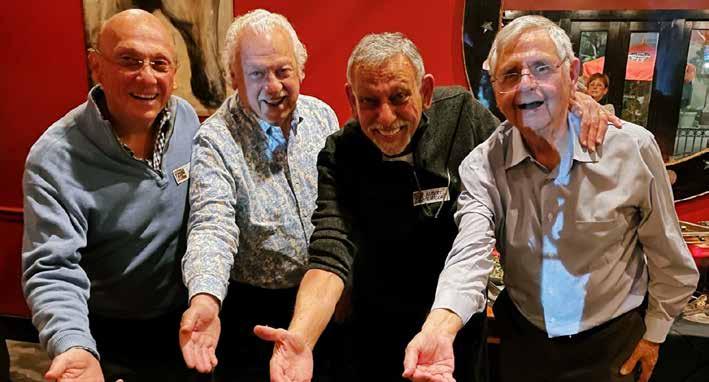
On a re cent Thursday evening this month, nearly three dozen descendants of Abraham Cohen gath ered for a fam ily dinner at Dunwoody’s Eclipse de Luna tapas restaurant. They came together to honor a historical fam ily patriarch who died decades ago but came with a history that goes back to the Spanish Inquisition.
Bob Bahr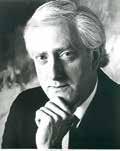
So, what most of the family was consuming on that evening in Dun woody was not just the restaurant’s Spanish delicacies, but the sense of his tory to which they found themselves connected again.
One of them, Luna Cygielman, re membered how the family had gathered in the past. There had been major fam ily reunions in 1980 and in 1992, the 400th anniversary of the Spanish exile. The events brought family members to gether from around the country for a weekend of renewing old relationships and starting new ones. This month’s din ner was for a much smaller group, but as Cygielman pointed out, it was just as important.
“I think if we don’t do this, every body will get dispersed and go on their separate way,” she said. "This is where we come from. And deep in your heart, you have this Sephardic thing in you, and you have your Cohen family in you, and it’s your world. It’s your roots.”
The food that night was a remind er that 430 years ago the Jews of Spain carried their Hebrew dialect of Span ish, “ladino,” and their Spanish culture throughout the Mediterranean. Many of them found a welcoming refuge in Tur key, where the Islamic Ottoman Empire was expanding rapidly.
Centuries later, in the first decades of the 20th century when war broke out between Turkey and the Balkan states of Southern Europe, some of the Jews, fearing their sons would be con scripted, moved again. They made the long journey across the Mediterranean and the Atlantic Ocean to America or to Spanish-speaking Cuba, where the ladi no they spoke made it easy to establish businesses and fit into the local commu nity.
Among them was Abraham Cohen, who fled from the Jewish community in
Izmir in 1908 with his older son, Victor, to Havana, where he opened a restau rant. He brought the rest of his family and a nephew to the island in 1913.
After World War I, Abraham Cohen moved to Atlanta with his wife and sev eral of his children. Many years before, in 1914, the Sephardic community in Atlanta had started to put down roots.
Two competing synagogues, one for Turkish Jews and another for those from the Greek island of Rhodes, merged into one, forming Congregation OrVe Sha
lom.
There were a number of social and benevolent organizations that paral leled what had been set up by their Ger man and Eastern European neighbors.
A faded and tattered photograph taken in Atlanta in 1920 shows a dour and serious-minded Abraham with his equally sober wife standing behind him surrounded by several of their children. He was said to have had 12 children in all. A daughter, Luna, and her husband, Isaac Barrocas, who remained behind
in Cuba, have been edited by the studio photographer into one side of the large portrait.
In the same year Abraham Cohen sat for his family photograph in Atlanta, 65 Sephardic families were here, and their synagogue had just moved into its first permanent home.
Today, Luna and Isaac’s son, Albert Barrocas, a retired surgeon and hospital administrator, is an active family his torian. He has helped put together an elaborate family tree with over a dozen
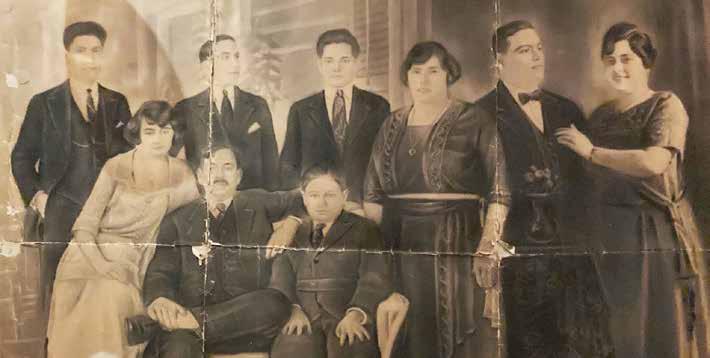
branches.
He has written about how, as late as the 1940s and 1950s, the Cohen family was still a closely-knit family unit. They all lived not far from one another on a single block of Central Avenue in south west Atlanta.
“At 475 Central Avenue, downstairs was where the Maslia family, lived. They were part of the Cohens. Upstairs lived
Morris and Rose Cohen. Next to them lived the Henry and Stella Maslia fam ily, and Catherine Cohen; and so it went down the street. In 1954, when I first ar rived from Cuba, we lived in the same home at 475 Central Avenue that the Maslias had lived before.”
A detailed map of the Sephardic community has been painstakingly as sembled by David Maslia and a commit
tee of family members. They combed re cords at the Atlanta History Center and the William Breman Jewish Heritage & Holocaust Museum and enlisted the aid of historians from Georgia State Univer sity and Emory University.
As Maslia recalled for the Atlanta Jewish Times four years ago, they were able to create a portrait of 150 members of their Sephardic synagogue and 425

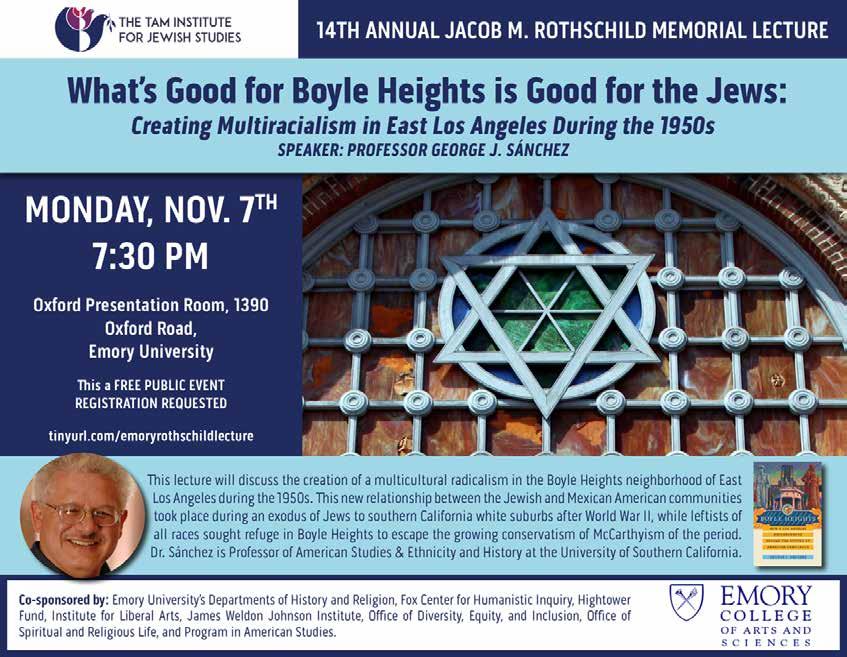
businesses that date back to 1918. The effort, which involved over 500 pages of research and took more than three years to complete, is a unique record, not only of his own family but of his community, which remains, in one way or another, tied to its past.
“This is where we all were. It’s a glimpse of all those people in another era. It’s our history as Jews.” ì
Zhenia Greszes was born in a small shtetl outside of Kiev, Russia, in 1923. With pogroms in Russia, the fam ily decided to move to Ha vana, Cuba in 1931. Benjamin Greszes was born in Kobryn, Poland and came to Cuba with his family when he was 14 years old. Zhenia came to Cuba with her family when she was seven years old. She met Benjamin at Moishe Pipik Cuban Jewish delicates sen. He was from an Orthodox home, and she wanted to live that lifestyle.
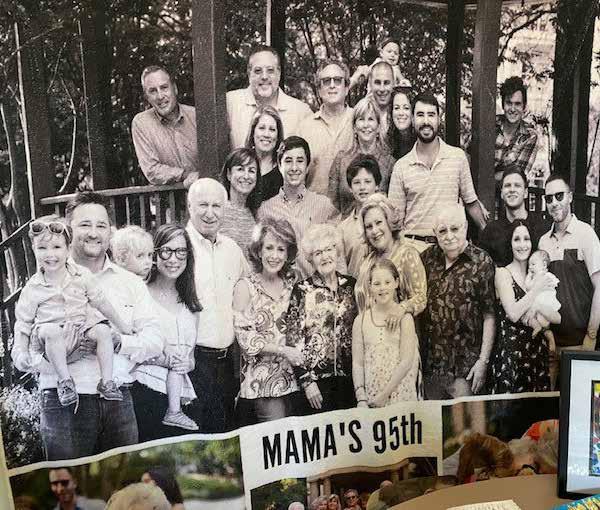
Zhenia Greszes moved to Atlanta in 1961. She lived for 55 years in the Jewish neighborhood of Congregation Beth Jacob and Toco Hills and has lived at the Renais sance on Peachtree Street in Atlanta since 2017. Zhenia recently celebrated her 99th birthday with family at the Georgia Aquarium and is looking forward to celebrating her 100th next year.
“I consider my life to be exceptional,” she said. “Ninety-nine is not just a number.”
Miriam Saul is proud to be Zhenia’s daughter and a member of the family of three children with mates, seven grandchildren with mates, and nine great-grand children.
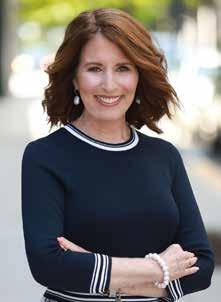
Who says that history doesn’t repeat itself? For Zhenia Greszes, as a child of nine years old, she experienced some of the same atrocities that are being reported today. Zhenia witnessed and experienced po groms where Russian soldiers would come through their village and destroy everything in sight. They would drag males to take them to fight the war. Her father, Pin cus Bicoff, tried to hide but soldiers found him and took him to jail.
Saul said: "My grandmother and her two daugh ters (my mom and her sister) were left behind to fend for themselves. Somehow my grandfather managed to pay off someone and he escaped. My grandmother did not know his fate. A couple of years later, he wrote to her that he was in 'the new world' and would soon send
them tickets so they could reunite.
"My mother doesn’t remember much about those early years; just that her mother was super strong and never let them want for anything. Grandmother and daughters arrived in Cuba to start their new life."
On Coming to America, September 2015
Greszes recalled: "In 1961, my husband and I and

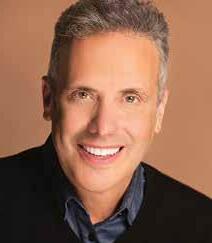
three children came from Cuba to the United States. My children, two girls and a boy, were named Lidia, 15 years old; Miriam, 12; and Mario, 4. My husband and I knew little English, the children knew none, so we waited for January to get our son to kindergarten, and that summer he went to day camp. For the Fourth of July, they had a celebration at camp, and my surprise was to hear my baby in the front row, singing together with all the Ameri
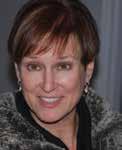
can children a Woody Guthrie song, 'This land is my land, this land is your land, from California to the New York Is land.' I couldn’t stop wiping my tears from my face. Still, whenever I hear that song, it moves me to tears. That little boy grew up to be a lawyer who works for Morgan Stan ley and lives in a penthouse overlooking all of Atlanta. Is this a great country or what?"
Greszes said: "My late husband, Ben, loved to read. When he was a young man, he was walking with a book in his hand around the 'Malecon,' which is a walk way beside a sea wall in Havana.
"From the opposite direction, an older man walked towards him. When the man came closer, Ben recog nized the man to be Albert Einstein, wearing his trade mark sandals and ripped jacket. The professor was vis iting the University of Havana. He stopped Ben to ask about the book. They talked for a while; Ben asked Ein stein to sign his book and he did.
"We kept that book until we came to this country, but we could not bring it in. Some lucky person has this book now in Cuba, but it is dedicated to Ben Greszes."

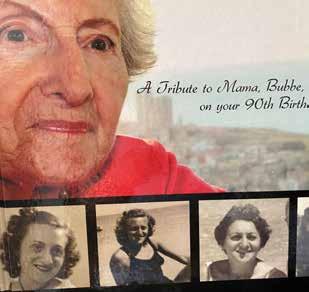
Greszes continued: "We were still in Cuba in the be ginning of 1961, after the revolution, at the time when Cuba nationalized all private businesses and froze per sonal money in banks. We were already making plans to leave for the U.S. and knew that we would not be able to bring any of our belongings or our most treasured pos sessions.
"The money we had was liquid; and while our fam ily was still together, as we were sending our daughters ahead of us to family in Atlanta, we decided that we would live it up and spend as much as we could before we left. As I think about it now...we decided to live 'la vida loca.'
"To treat ourselves, we decided to take a holiday at the beach resort of Varadero and stay at the glamorous and very expensive International Hotel.
"One morning when we were coming down on the elevator to go to the beach, the elevator door stopped on the next floor and Castro himself came into the elevator
dressed in green fatigues, accompanied by bodyguards.
"He started talking to our son who was eating an ice cream cone and was totally oblivious to who he was. Castro continued to try to get a conversation go ing, but our kid was too busy enjoying his ice cream. We were so shocked…we had actually met the 'bearded one.' Little did he know we were about to defect…and that would become one of our claims to fame."
Miriam and her husband, Danny Saul, express so
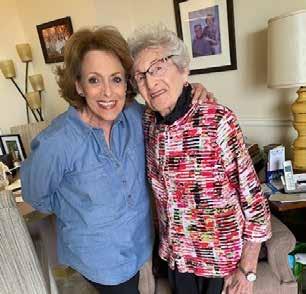
many things they love about her mother and his moth er-in-law.
“She always sticks up for me,” says Danny Saul, “and is the most positive person I know. She never says anything bad about anyone, and she loves my car the best.”
Miriam Saul explained: “She is the wisest person I know and is accepting of any challenges, and loves with out condition.” ì

An international leader in cosmetic, implant and general dentistry for more than three decades, Dr. David Mastro’s patients travel world-wide for his Atlanta cosmetic dentistry and report that he is one of the country’s top cosmetic and general dentists.

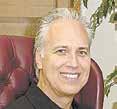
Dr. Mastro is a unique dentist with his artistic expression developed through years of hand crafting crowns, veneers and bridges. Today, with the aid of the most advanced technology available, Dr. Mastro can care for patients’ complete dental needs from oral surgery and implants to fillings and general cleanings. Dr. Mastro is legendary for quality dentistry and for transforming smiles for people from all walks of life.
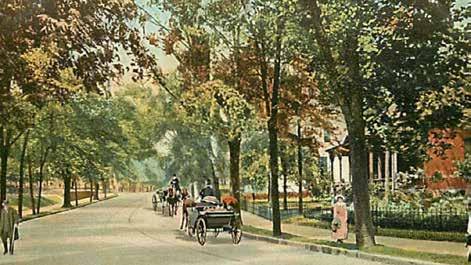 By Bob Bahr
By Bob Bahr
The hundreds of thousands of people who speed through downtown Atlanta in their automobiles each day hardly give it a glance, but Washington Avenue, which lies just south of the I-20 interchange and the state capitol, was once among the city’s most desirable neighborhoods. In the later decades of the 19th century, it was home to some of the most important people in Atlanta and an important cen ter of Jewish life.

The city’s first synagogue, the im pressive Hebrew Benevolent Congrega tion, later known simply as The Temple, with its onion-shaped domes, opened nearby in 1878. Its congregants were German-speaking Jews who had pros pered after the end of the Civil War in 1865. One of them, David Mayer, was a founder and longtime member of the City of Atlanta school board. Another was the first Deputy Mayor of Atlanta. Several German Jews helped found Grady Hospital.

Later in the 19th century and early decades of the 20th century, as poor, Yiddish-speaking Russian Jews crowded into the surrounding downtown neigh borhood, the more prosperous Temple members were there to help. The streets on Atlanta’s Southside around Washing ton Avenue became a cradle of local Jew ish life.
It is the story of the growth of that community and how it changed and prospered that has fascinated Geor gia State University history professor Marni Davis. She is writing a book with the working title of “Southsiders” about what she calls the Washington-Capitol corridor.
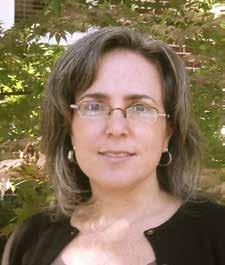
“What I’m writing is sort of a social geography of who was in the Southside, how that changed and why. And the ‘why’ is going to investigate not just the policy makers at the municipal level, but also the institutions that are responding; the neighborhood organizations that bring resources and services to the neighbor hood.”
As waves of poor, Yiddish-speaking Jews poured into the city around the turn of the 20th century, Washington Avenue developed to serve their needs. The Aha vath Achim Synagogue, which was first an important Orthodox synagogue and later became affiliated with the Conser vative movement, was founded on Wash ington Avenue in 1904 to serve them. Just a year earlier, the Jewish Educational Alliance was built nearby on Capitol Av
enue to help the new arrivals learn to ad just to American life.
Surrounding these important early institutions were streets that began to ac commodate a growing number of Jewish merchants. Mark Bauman, a leading his torian of Jewish Atlanta, has commented that you could buy anything from Jewish merchants in the first years of the 20th century. They sold everything from bar ley and malt for dairy cows to straw hats, paper goods, and bedsprings for the city’s rapidly growing population.
Davis has compiled a fascinat ing website devoted to one street in the neighborhood, with its grocers, butch ers, bakers and ice cream makers. Many of them were Ashkenazic Jews who had come from Russia or were Sephardic Jews who had come from Turkey or the Greek island of Rhodes in the eastern Mediterranean.
If you needed a prominent attorney, or banker or real estate developer, they were there, too, the well-established Ger man Jews of The Temple. All of them liv ing and often working together on the Southside, but, as Davis points out, with a certain sense of separation between them.
“You had these three groups of Jews who interacted at a certain level and didn’t interact at another level, particu larly socially. You had AA synagogue for the Eastern European Jews. You had The Temple for the German Jews. And there was Or VeShalom synagogue, which was started for the Sephardic Jews. So that they, in a sense, mingled, but they also stayed apart.”
As the city grew and the Jewish residents prospered, they bought auto mobiles and became more mobile. They built homes near Ponce de Leon Avenue
and further north in the city.
By the 1950s, all those automobiles played a major role in finishing off what was left of the old neighborhood. The interstate highway system carved up downtown Atlanta during the mid-20th century and the I-75 and I-85 downtown connector paved over large sections of what had once been such a thriving Jew ish community. Much of it is simply gone, vanished. It’s part of the reason Davis is writing her book.
“The old neighborhood is just no place. It’s just a road for cars to go quick ly...and the more that I learned about what had been there, the more I felt like it was incumbent upon the local Jewish community to know more about that. I think it’s an important part of how Atlan ta’s Jewish community understands how they fit into the larger story of Atlanta’s development.” ì



 By Bob Bahr
By Bob Bahr
On Oct 20, The William Breman Jew ish Heritage & Holocaust Museum and Neranenah, the Atlanta Jewish music organization, continued their successful partnership with a performance featur ing saxophone virtuoso Eddie Barbash. The concert at the Breman Museum au ditorium, located in the Jewish Federa tion of Greater Atlanta building, was a homecoming, of sorts, for Barbash who moved to Atlanta with his parents when he was two. The performance continued a well-attended series of musical perfor mances between the two Atlanta institu tions that began this summer.

The concert was a tribute to the sax ophonist’s late grandfather and grand mother, Murray and Lillian Barbash, who were prominent patrons of the arts on Long Island, where Barbash was born. His grandfather’s success as a suburban real estate developer fueled his grand mother’s interest in everything musical.
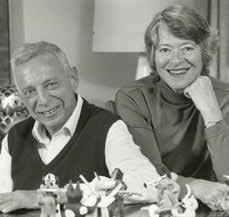
When Lillian Barbash died two years ago at the age of 92, she was called Long Island’s “First Lady of the Arts.” During the 31 years she headed Long Is land’s Islip Arts Council, she built it into a world-class sponsor of classical music concerts. As a patron of the arts, she once commissioned an original work for famed cellist Yo-Yo Ma that was a finalist for the Pulitzer Prize in music.
Eddie Barbash remembers the many summers he spent soaking up all the per formances they attended together.
“My grandmother loved the opera. And I would get to go see the New York Philharmonic. Her crowning achieve ment was every summer, she managed to raise enough money so that she could bring the New York Philharmonic to play a free concert in a state park on Long Is
land,” Eddie recalled.
During his program at The Breman auditorium, Lillian’s grandson, Eddie, drew, in part, on a selection of songs that he recorded last year, “For Murray and Lillian,” which reflect both his and his grandparents’ wide taste in musi cal styles. There was everything on the recording from jazz to mariachi. There were selections from composers as di verse as the classical Vincenzo Bellini to the Hispanic Pedro Infante to the popu lar Cole Porter.
In a conversation before his Atlanta performance, Eddie Barbash, who played with the award-winning string ensem ble, the KASA Quartet, pointed out that there is a long history of saxophones and strings in American music.
“There’s a great tradition of jazz in strumentalists playing with strings. I try to channel that sensibility and playing these songs that I love. I also try to do a little more than what a singer would be capable of doing.”
As an example, Eddie Barbash points to a selection on the program from the


opera, “Norma,” that was first produced in 1831. It’s a standard in the repertoire of opera companies around the world and the title role was a favorite of the great soprano Maria Callas, who recorded a fa mous performance in the mid-1950s.
Stars such as Joan Sutherland and Beverly Sills followed up with their own interpretations. Eddie believes the unique musical range of the saxophone allows for an interpretation that even those great voices from the past were able to attain.
“So, I can do things where I hit the highs of the soprano register and then suddenly swoop down low and can play something sort of unexpectedly sultry and low and breathy. There’s quite a con trast. A singer would have a really tough time achieving the arias that we like to do.”
Eddie Barbash has come quite far from the time he picked up his first saxophone when he was a third grader in Morningside Elementary School. He was particularly impressed, at the time, with a poster that showed all the famous instrumentalists who had also adopted
the horn. He counts them today as his personal heroes, particularly Johnny Hodges from the Duke Ellington orches tra and Coleman Hawkins.
After his bar mitzvah at The Tem ple, Eddie attended the North Carolina School of the Arts and studied at the Juil liard School in New York. At 19, he joined the famous jazz drummer Chico Hamil ton’s group in its final years. For a year and a half, he was part of Jon Batiste’s house band for Stephen Colbert’s Late Show on CBS. But while he credits the television experience as a great learn ing opportunity, he found the produc tion schedule didn’t give him enough time to pursue his own eclectic musical interests. As Eddie Barbash remembers it, though, the nightly TV show gave his grandmother an opportunity every night to enjoy her grandson’s musical success just before bedtime. According to the saxophonist, she took special pride in his appearances.
“It’s like this line from the Broad way production of ‘The Music Man.’ She would say, ‘that’s my boy, that’s my Ed die.’” ì

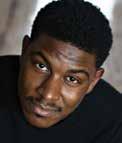
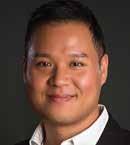
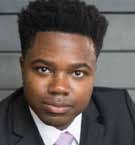
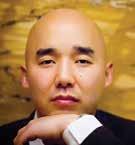

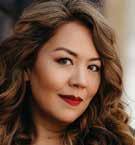
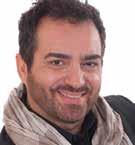




 By Bob Bahr
By Bob Bahr
When Ben Zinn was a teenager growing up in Israel, he lived only to play basketball and soccer, his favorite sports. His prized possession was a pair of black basketball shoes that his uncle had sent from America. Education was an after thought. However, that all changed one day when he was 15.
His father, a poor Polish immigrant who lost most of his family in the Holo caust, struggled to pay his son’s school tuition. When he was told one day that his son was flunking his classes, he took action. Seventy years later, Zinn remem bers the thrashing he received then.
“I’ll never forget the beating of my life. And after that, he took my American Keds, those basketball shoes I loved, and he cut them to shreds. He told me I could play soccer only if I brought my grades up to a ‘B’ average.”
It was a transformative experience for Zinn, who realized at that moment that if he wanted to get what he wanted out of life, he had to use his head as well as his athletic ability. That lesson eventu ally led him into a career as a pioneer in rocketry and aerospace engineering.
Today, at the age of 85, he is retired from Georgia Institute of Technology where he was the David Lewis chair of his department and a Regents’ professor of aerospace engineering. He’s won every important award in his field.

But as a poor boy from what was in the 1950s a poor country, Israel, the future academic superstar first became something of a soccer superstar. He was among the youngest players on the Israe li Army national team when they toured America. One of his fondest memories is of a game in 1957 in Brooklyn where he found himself standing next to Marilyn Monroe and her husband, the famed playwright Arthur Miller.
Even though he hardly knew a word of English, his athletic ability won him a schol arship at New York University. It helped launch him on a career that dwarfed his accomplishments as an athlete.

“If I had stayed in Israel and went to school there, there’s a good chance that I would have been a soccer coach,” Zinn recalls. “Because many of the people who played there, this is where their career ended.”
He soon found that the real excite ment he craved was not on an athletic field but in a laboratory. He went on to do graduate work at Stanford University and Princeton University, where he did
research for NASA, the National Aero nautics and Space Administration, which had just recently been established.
When he received his PhD in aero nautical engineering in 1965, the United States was locked in a desperate space race with Soviet Union. That same year, Zinn came to Georgia Tech to start the graduate program in aeronautical engi neering. Three years later, America put a man on the moon. Opportunities were everywhere.

Without giving much thought to a carefully structured career plan, Zinn had landed in the middle of a critical mo ment in the history of technology. The space race propelled human beings into orbit and started scientists like Zinn on meteoric careers.
Early on, he tackled the problem of
why so many powerful space vehicles were blowing up soon after their launch. Not only did his research improve NASA rocketry, but it improved the perfor mance of such diverse technologies as helicopters, gas turbines and the perfor mance of ships at sea. He did work for the U.S. Army, Navy and Air Force, the federal Department of Energy and some of the world’s largest aerospace companies.
Before he retired, Zinn built Georgia Tech’s program into one of the top five academic aerospace engineering centers in the country. Its graduates are found in all the big-name engineering firms in America and around the world. For years, he worked with engineers from Rafael Advanced Defense Systems, the Israeli defense contractor that played a crucial role in developing Israel’s Iron
Dome anti-missile system. Ultimately, Georgia Tech named one of its largest in dustrial laboratories after Zinn.
His father, who, on a fateful day in 1952, had shredded his son’s basketball sneakers and demanded that he shape up, died before he could fully enjoy his son’s success. But he did live long enough to see Zinn present one of his first papers at Israel’s Technion, the country’s pres tigious technical university. Zinn knew then that he had done his father proud.
“He used to collect the clippings from my career in soccer and later from the universities I attended. Before he died, he came to see me give my paper in this big lecture hall at one of the best uni versities in Israel. I looked out into the audience, and he had a smile on his face from ear to ear.”



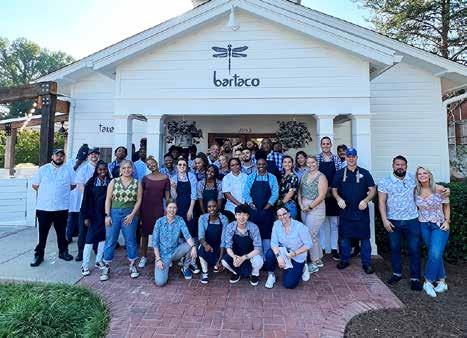
 By Marcia Caller Jaffe
By Marcia Caller Jaffe
It’s much more than a bar and serves more than the humble taco.
bartaco, with three existing Atlanta locations and 24 overall, opened its new est lively location in the Vinings Jubilee Shopping Center on Paces Ferry Road. Situated in an old church, the indoor/ outdoor restaurant preserved the origi nal exposed wood ceiling rafters and oak wood floors with reclaimed oak and Douglas Fir furniture. The vibe is any thing but old-fashioned as we visited on a beautiful fall Saturday night and were then presented with a bit of a wait at 7 p.m. By sunset, the flow had eased up.
Of special note is that the co-found er, Scott Lawton, grew up in Vinings and shares wall space of photos of his child hood, along with the original artwork of Sasa Mahr-Batuz, bartaco’s other found er. Since the brand’s signature logo is a dragonfly, aligning bartaco are stained glass windows created by local glass fab ricator, Accent Glass.

The drink menu is broken down by beer, tequila + mezcal, and non-alcoholic on one side. The other side boasts cock tails made from fresh-squeezed juice and sangria + wine. We had sparkling cava at $8.50 a glass. More adventurous choices would be “Smoke on the Water” with watermelon, mint and Banhez Mescal, or summer Caipirinha with elderflower and cachaca, and many others ending in a pineapple crush. A clever non-alcoholic menu is now also popular for those who want to concentrate on the food.
The menu is, well, tacos and not ta cos. The petite-sized version taco ($2.85 or $3.85 each) features the following op tions: mushroom with queso, cauliflow er, Baja fish, tuna tataki, and an amazing falafel version, sharing the menu with seven others. In the next section, “not tacos,” we sampled the gazpacho ($5.50), which was a sharable-sized bowl topped off with an olive oil coulis “squiggle,” and chunks of veggies. The green papaya sal ad ($3) was a nice change-up and afford able, but the star in the category was the chopped salad ($7.95). The $9 ceviche was sharable and spongy. The black beans were a tad undercooked that night. Other good options are kimchi, tuna poke, and the always reliable standby, guacamole ($6.25 for the small). The Esquites street corn off the cob ($4.75) was authentic.
Rice bowls come next at $8.95-$9.95. With ample portions, we tried the “pur ply” raw ahi tuna. There is an extensive kid’s menu with 12 items, many for $2
and $3 that have cool names like corn wheels, fruit skewers, and are downright healthy like streamed broccoli. A steak taco is only $2.
Desserts range from key lime pie in a jar ($7) to Tres leches and gelato ($3.75).
A modern “tailor-made” option was that each table has its own set of spice salsa jars: roja, happy habanero, and ja lapeño to accommodate the range of add ing one’s own level of heat.
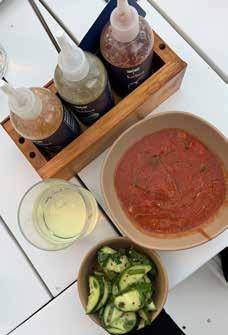
The other extremely popular “ben nie” is the free parking out front and the ability to stroll about the charming Jubilee Shopping Center before or after dining. Patrons are given the option of ordering from a QR code. While being old-fashioned, we chose a printed menu that came with a pencil to note, or “tally,” the table order. Descriptions are not in cluded (like what is panucha?), but the staff is ready to answer questions as they
breeze by. Dishes are served family style on trays. The bartaco staff was compe tent enough at teamwork, so don’t get used to knowing which server will bring which dish and in what order. Somehow it all seems to work just like the dragon fly, some of the first winged insects to evolve who are still whizzing and color ful. Maybe like bartaco.
bartaco is located at 4300 Paces Fer ry Road in Vinings. ì
Corrina
Sephora (Men soff) is as mys terious and exotically re bellious as her name implies. With local Ju daic master pieces and a wild variety of media, this artistic freethinking maverick remarked, “I don’t conform to an archaic model of the con straints of what women’s work could or should be, since I’m working with metal, welding, blacksmithing and building large-scale sculptures. I have a quiet spiri tual side that prefers to walk in the woods, or at the ocean and spend time in my stu dio.”
Alchemical Divide,” “Blood of the Earth,” “Dreamscapes,” and “Between the Deep Blue Sea and the Universe.” Her work sells from $50 to $200,000 and resides in col lections from Elton John and Jane Fonda to Temple Sinai and the Atlanta Jewish Academy, in steel, copper, bronze, brass, stainless steel, or dust from her studio merged into her paintings.
Be mesmerized…
Marcia Caller Jaffe
Also known for her messaged paint ings, Sephora creates astral imagery with textures and dusts from remnants. Her collections include the out-of-the-box “The
Jaffe: How did you get started in such challenging arenas?
Sephora: I was born in a log cabin to some free-thinking Jewish parents. I started welding in my father’s studio at five, then watching my stepdad and my re tired sea captain in the Royal Dutch Navy grandfather build miniature boats. I went to a Waldorf school and learned to create with my hands, painting, drawing, fibers, and woodwork, as well as dance and lan guage. In high school, I began making jew elry where metalsmithing and art fused. I’ve sheared sheep and spun wool, made dyes; and looms were my first “machines.”
I have a double major from Massachusetts College of Art and Design in metals and sculpture.
Jaffe: Is welding traditionally men’s turf?
Sephora: As a sculptor, blacksmith welding is a process I use. In my 20’s I was a certified welder. All of my welds were run through an X-ray machine to check for pin holes. I worked at a shop with over 200 employees as the first and only wom an ever hired as a welder.
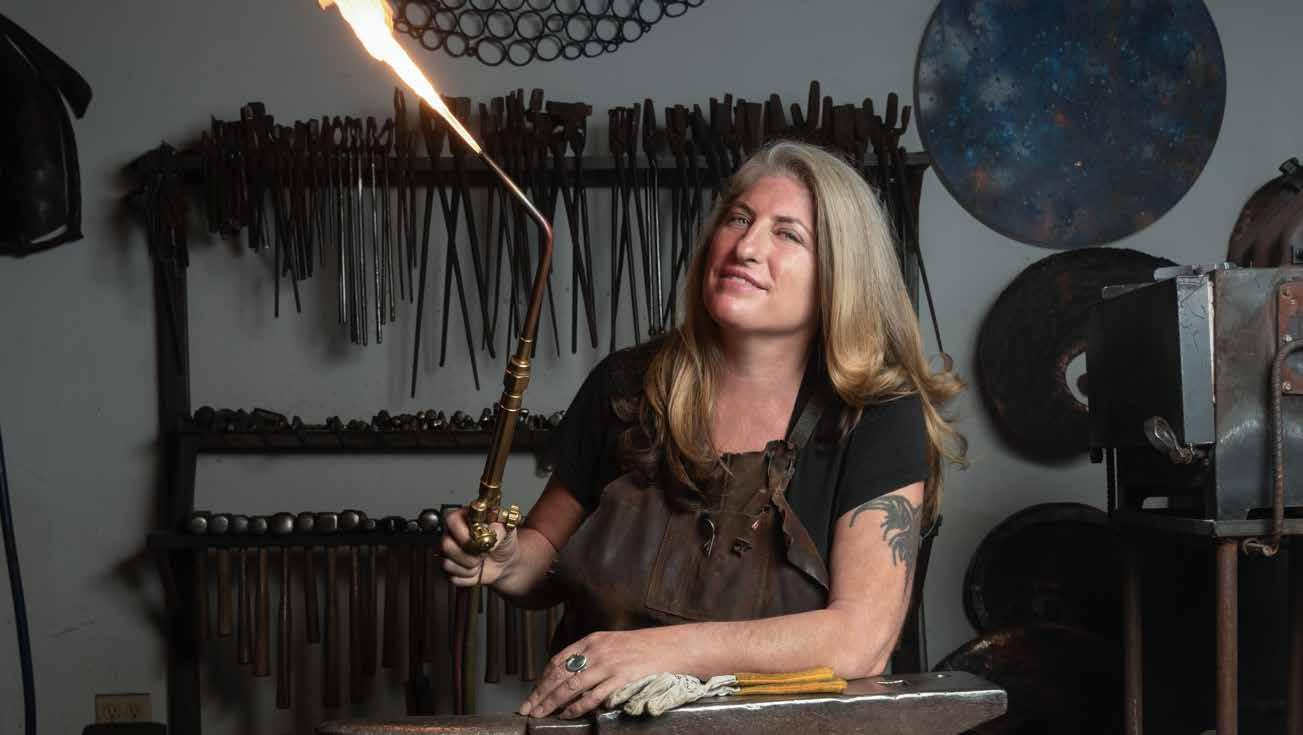
Jaffe: Divulge why you interpret lu nar and scientific images.
Sephora: After my mother suc cumbed to cancer, I started looking at cell shapes. The last thing she said was, “I’m sending this prayer to you from the moon.” Then, she went to sleep watching the moon rise for the last time over the Sangre de Cristo Mountains in her New Mexico back yard. I felt that the astral images were a portal to this mysterious place...the cosmos, the afterworld, and
by painting them, I got to imagine my mother’s new environment. This kept us connected.
Jaffe: Elaborate on your “star struck” work.
Sephora: [Jane] Fonda and I met in early 2000s through an artist friend who was re-doing the interior of Jane’s daugh ter’s Grant Park home. She commissioned me to create a sculptural fireplace screen and determined that Vanessa and I would become friends, which we did. Elton [John] has one of my Early Gun Transformations made out of an AR -15 shortly after the Parkland shooting. It’s a bouquet of flow ers made from the barrel of a gun. There was a film made about using guns and gun transformations in artwork: “Sepho ra and Guay Explore Gun Debate Through Art” (2019).
Jaffe: You’re all over the city. Of what pieces are you most proud?
Sephora: “The Walking Boat Sculp ture,” “Where Have I Come From, What
Above: Sephora is known for her nautical work, shown here with one of her favorites, “Voyageurs en Bateau,” for sale at $5,200. // Photo Credit by Howard Mendel.
Below: Sephora by her home fireplace mantel with five small metal sculptures from the “Avirons” series. These magical oars are inspired by paddle boards and ancient scepters, in bronze, copper and stainless steel. “Avirons,” meaning “oars” in French, are a mythical tool for transcendence. // Photo Credit by Howard Mendel.

Sephora hand crafted these candlesticks which are steel in the form of bamboo. // Photo Credit by Howard Mendel.

Will I Leave Behind?” are my favorites. I’m proud of my work at Temple Sinai and the Martin Luther King Center for Nonviolent Social Change. I recently created a sculp ture for the Freeport Art Museum outside of Chicago, “Bridge Beyond Time.” I re ceived a national call to create this piece, so that was a milestone.
Sephora: I have contemporary works from Michi Meko, Mildred Thompson, William Downs, Lucinda Bunnen, Mar tha Whittington, Scott Behr, Eric Waters, Jiha Moon, Purvis Young, Estaban Patino,
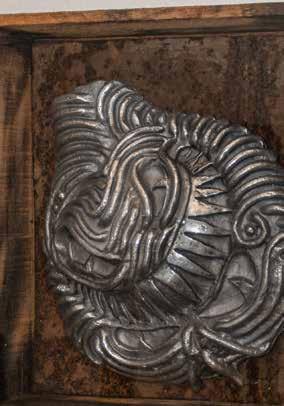
Sephora did this singe piece with a series of ladders, using a hot piece of metal and wet paper. The fire painting overlooks her companion ladder sculptures, “Curious Dreamer”. // Photo Credit by Howard Mendel.
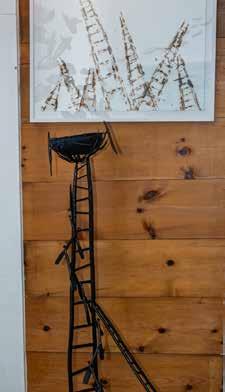
Hope Cohn, Linda Mitchell, Steven An derson, Justin Rabideau, Julie Ann Ward, Lavanya Challah, Asha Greer, Jeanette Dorsey, Terri Dilling, Meagan Mosholder, Karen Tauches, Gabi Madrid, and my aunt, Susan, and lots more…
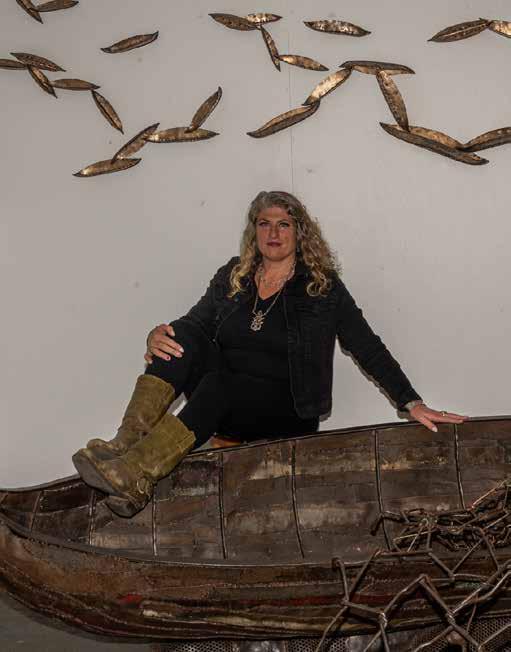
Jaffe: Share your Judaic inspira tions.
Sephora: I created the door for the ark of the covenant and the menorah wall at Temple Sinai. More recently, a large stainless-steel menorah at Chabad Intown on the Beltline. I created the Holocaust Memorial at Atlanta Jewish Academy and a series of outdoor botanical pieces at the Sephora’s dining room shows this unusual cast aluminum nautilus form in a wood and plexiglass case made by Scott Behr when he was at Atlanta College of Art.
// Photo Credit by Howard Mendel.
Sephora: Once, someone broke a leg in a car accident and wanted a pendant made from the titanium leg rod. Recently, I had a commission for a sculpture made from the titanium from their handi capped dog’s wheel cart.

Sephora: I will have work in a show at Spalding Nix Fine Art, and at the Swan Coach House Gallery, “Little Things Mean a Lot.” I have a show slotted in January at the Reeves House Gallery in Woodstock and a 30-year retrospective exhibition at a Fulton County gallery in spring. I will be a part of a group show at the Chastain Arts Center in May. I currently have two works in outdoor exhibitions at Marietta Square, and a large outdoor sculpture in Kennesaw at the Smith-Gilbert Gardens. I have been offered an exhibition at the Atlanta Botanical Gardens (Gainesville). I would like to have my work in museum exhibitions like the Whitney Museum of American Art and at the Venice Biennale.

Sephora: It’s transitioning into a butterfly because I lead transformational courses globally. And it needs a new life...
For Sephora’s classes and access to her work, visit www.corrinasephora.com. ì
 Above: Sephora’s studio art room houses her work in acrylics and dust particles featuring the large painting, “Sun, Moon and the Universe”. // Photo Credit by Howard Mendel.
Below: Sephora’s great room has this black/gold creation, “Topographical Map,” by Michi Meko. Amethyst gemstones adorn a cowhide rug. // Photo Credit by Howard Mendel.
In Sephora’s cheery kitchen is this Asha Greer painting. // Photo Credit by Howard Mendel.
Above: Sephora’s studio art room houses her work in acrylics and dust particles featuring the large painting, “Sun, Moon and the Universe”. // Photo Credit by Howard Mendel.
Below: Sephora’s great room has this black/gold creation, “Topographical Map,” by Michi Meko. Amethyst gemstones adorn a cowhide rug. // Photo Credit by Howard Mendel.
In Sephora’s cheery kitchen is this Asha Greer painting. // Photo Credit by Howard Mendel.
Support Group: Experiencing Infer tility – 7 to 8:15 p.m. Join the Jewish Fertility Foundation for anyone ex periencing infertility. Registration is required at least 12 hours in advance by visiting https://bit.ly/3s4B0v0.
Virtual Job Search Workshop – 10 to 11 a.m. Join JF&CS for a 1-hour workshop where we will explore strategies to con duct a successful job search that will help you secure employment more effectively. Topics will include how to handle the emotional roller coaster, job choice and self-assessments, iden tifying potential employers, creating a personal branding statement, net working strategies and more. Register at https://bit.ly/3TqpJ3O.

Dr. Becky Kennedy, Good Inside – 7:30 to 8:30 p.m. In Good Inside, Dr. Becky shares her parenting philosophy, com plete with actionable strategies that will help parents move from uncer tainty and self-blame to confidence and sturdy leadership. Enjoy this MJCCA Book Festival event at the Da vis Academy by purchasing tickets at https://bit.ly/3yNrMah.
Jon Meacham, And There Was Light –7:30 to 8:30 p.m. Pulitzer Prize-winning biographer and #1 New York Times bestselling author Jon Meacham chronicles the life and moral evolu tion of Abraham Lincoln and explores why and how Lincoln confronted se cession, threats to democracy, and the tragedy of slavery to expand the pos sibilities of America. Learn more from the MJCCA Book Festival at https://bit. ly/3SbPzrf.

Tot Shabbat – 5:30 p.m. Tot Shabbat is led by Rabbi Jordan from CDT. Enjoy crafts, songs, fun activities, and more. Tot Shabbat is for kids under 4 years old with their parents/guardians. RSVP by visiting https://bit.ly/3LLJakS.
Across the Ocean 10:30 to 11:30 a.m. Join Dave Holland of Beatin’ Path Rhythm for a musical journey unlike any other! Come along with Davis Academy on an intercontinental voy age in search of rhythmic treasure. This program is fun for the whole fam ily! Register at https://bit.ly/3DZXRz4.

Heroes of Life Gala Honoring Andrea and Mike Leven – 6 p.m. The He roes of Life Gala honors our heroes: Andrea and Mike Leven for their ex traordinary commitment to the ath letes at the Israel Sport Center for the Disabled. To donate, go to https://bit. ly/3TbTJk7.
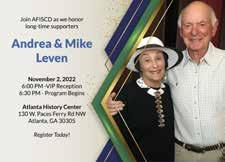
POW: EmPOWering Workshop for Women – 11:30 a.m. to 1 p.m. POW!’s focus is to help moms and caregivers take pragmatic (logical) steps to cre ate a more manageable life for them selves. Also meets on Nov. 11. Join JCFS by Zoom and register at https://bit. ly/3Tqq3zy.

Etz Chaim Team Shabbat 10:30 to 11:45 a.m. Kids Programs Join one of our Team Shabbat Leagues. Find out more at https://bit.ly/3dKsbD9.


Melissa Rivers, Lies My Mother Told Me – 8 p.m. If you think Joan Rivers said funny, outrageous, and ridiculous things ONSTAGE, wait ’til you read the funny, outrageous, and ridicu lous things she said OFFSTAGE and things that will make you laugh out loud and keep Melissa in therapy for the foreseeable future. Join the MJCCA Book Festival by purchasing tickets at https://bit.ly/3TvAP7w.
Middle School Movie Day – 12:30 to 2 p.m. Snacks and a flick with the crew at Gesher! Register at https://bit. ly/3MGIjCo.

Talk with Her, featuring guest speaker
Kimberly Wolf – 5:30 to 9 p.m. Kim berly Wolf joins JWFA for two inter active workshops, one for parents and one for high school girls, that will provide a blueprint for tough conver sations, meaningful interaction, and concrete tools to help us strive for ex cellence rather than perfection. Regis ter at https://bit.ly/3D0nsWD.
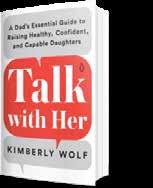
An Evening of Mystery – 5:30 to 10 p.m. Join us for an evening of Interactive Theatre & Dinner celebrating JIFLA Board Chair and Co-President Laura Kahn. Laura has been involved with JIFLA since we opened our doors in 2010. Purchase tickets at https://bit. ly/3yNKyhC.

Torah Reading: Lech-Lecha
Friday, November 4, (Cheshvan 10, 5783) Light candles at 6:24 p.m.
Saturday, November 5, (Cheshvan 11, 5783) Shabbat ends 7:20 p.m.
Torah Reading: Vayeira
Friday, November 11, (Cheshvan 17, 5783) Light candles at 5:19 p.m.
Saturday, November 12, (Cheshvan 18, 5783) Shabbat ends 6:15 p.m.
Roni Robbins, Hands of Gold: A Novel 11 a.m. to 12 p.m. “Hands of Gold,” loosely based on real events, follows Sam on a journey that takes him from war-torn Europe at the turn of the 20th century, through the Great Depression and labor union reforms in America. Join Roni Robbins at the MJCCA Book Festival by learning more at https://bit. ly/3gkf1xm.
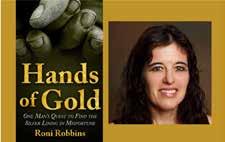
High School Crystals and Kabbalah – 6 to 8 p.m. Join Hannah Zale from Gesh er for an exploration of New Age Juda ism and Kabbalah! Register at https:// bit.ly/3D5yRFL.

Rabbi Jacob M. Rothschild Memorial Lecture – 7:30 p.m. The Tam Institute for Jewish Studies (TIJS) will feature Prof. George J. Sanchez of the Universi ty of Southern California as the speak er for this year’s Rothschild Lecture, which is titled "What’s Good for Boyle Heights is Good for the Jews". Reserve tickets at https://bit.ly/3MDDFFg.

Never is Now: 2020 Summit on Anti semitism and Hate – 8 to 9 p.m.. Join thousands of experts, community and business leaders, students and con cerned community members by tak ing part in Never Is Now, the world’s largest summit on antisemitism and hate. Anti-Defamation League by visit ing https://bit.ly/3TuMWln.

Lisa Barr and Meg Waite Clayton – 12 to 1 p.m. Join the MJCCA Book Festival and Lisa Barr and Meg Waite Clayton. Enjoy this in-person Author Talk, Au dience Q & A, Book Signing by visiting https://bit.ly/3zbvHxZ.
MJCCA Book Fest: Tova Friedman, Daughter of Auschwitz – 7:30 to 9:30 p.m. After surviving the liquidation of the Jewish ghetto in Central Poland where she lived as a toddler, Tova Friedman was four when she and her parents were sent to a Nazi labor camp, and almost six when she and her mother were forced into a packed cattle truck and sent to Auschwitz II, while her father was transported to Dachau. Purchase tickets at the MJC CA Book Festival by visiting https://bit. ly/3TePQuW.
MJCCA Book Festival: Bernie Marcus –7 to 10 p.m. As Bernie wryly remarks, “The start of Home Depot sounds like the beginning of a bad joke: Two Jews and an Italian decide to build a new kind of hardware store." Instead, they built the world’s largest home im provement retailer and transformed the industry. Purchase tickets at https://bit.ly/3VxmPfs.

Virtual Resume Workshop 10 to 11 a.m. Learn how to create an effective re sume or improve the one you already have. Transform your resume into a powerful tool. Register at https://bit. ly/3yJhPL1.

Gratitude Shabbat – 6 to 8 p.m. Join Gesher L’Torah for mitzvah (service) projects at 6 p.m. before Shabbat at 7 p.m.! Register at https://bit.ly/3yNtqZv.
Julia Haart, Brazen – 7:30 to 8:30 p.m. From the star of the Netflix reali ty series “My Unorthodox Life,” a rivet ing, inspiring memoir of one woman’s escape from an extremist religious sect and an extraordinary rise from housewife to shoe designer, to CEO and co-owner of the modeling agency Elite World Group. Purchase tickets at the MJCCA Book Festival by visiting https://bit.ly/3CNrXUm.

Let’s Talk About Dementia – 12 to 1 p.m. Join JF&CS Geriatric Care Managers, Wendy Liverant and Samantha Free man, for an informative and real dis cussion on caring for loved ones with dementia, resources for strengthen ing memory, and guidance for help ing family members with love, hope and dignity. Register at https://bit. ly/3Te0O3O.
Li’l Shabbat Around the World – 10:30 to 11:30 a.m. Celebrating Shabbat has never been so fun! Families are invited to join Davis Academy and PJ Library for a Li’l Shabbat where we will sing, explore and enjoy a li’l nosh. Get more information at https://bit.ly/3VARkkL.
Etz Chaim Team Shabbat 10:30 to 11:45 a.m. Kids Programs Join one of our Team Shabbat Leagues. Find out more at https://bit.ly/3dKsbD9.
Andrew Young and Ernie Suggs – 8 to 9 p.m. Featuring hundreds of full-color photographs that capture the ex traordinary life and times of Andrew Young and a captivating narrative by acclaimed Atlanta Journal-Constitu tion race reporter Ernie Suggs. Pur chase tickets at the MJCCA Book Fes tival by visiting https://bit.ly/3S8NqfT.
Wendy Brant and Julie Anne Cooper –12 to 1 p.m. Join Wendy Brant & Julie Anne Cooper, “Hanukkah Veronica, The Mitzvah Fairy” at MJCCA. Learn more at https://bit.ly/3s2cU49.

Nikki R. Haley, If You Want Something Done – 7:30 to 9:30 p.m. Join the MJCCA Book Festival and author of “With All Due Respect,” Nikki Haley’s sharply intimate and inspirational book cele brates the world’s most iconic women leaders. Purchase tickets at https://bit. ly/3Tw3CZJ.




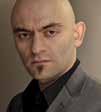
FALL in Love with Camp Festival – 11 a.m. to 2 p.m. MJCCA Day Camps and Camp Barney Medintz hope to see you at our second annual fall festival filled with fun, friends, and a chance for families to learn more about MJCCA’s amazing camp experiences! Learn more at https://bit.ly/3VEpvI3.

AJC’s Leaders for Tomorrow High School Program - 5 to 8 p.m. LFT en ables young Jewish leaders to develop skills to advocate on behalf of the Jew ish people, Israel, and human rights, and to serve as positive change agents for their peers and community. Regis ter at https://bit.ly/3UIjOsl.


Conversational Hebrew – 6:45 to 8:30 p.m. Learn Modern Hebrew and prac tice your skills with a beloved Hebrew teacher from Temple Beth Tikvah. This class promises to be engaging, informative, and enjoyable. Register at https://bit.ly/3DUkMf6.

Clea Newman Soderlund, The Ex traordinary Life of an Ordinary Man – 7:30 to 8:30 p.m. Join the MJC CA Book Festival for a very special evening featuring Paul Newman’s daughter, Clea Newman Soder lund. Clea will share stories about her father, the greatest movie star of the past 75 years. With thoughts/ comments throughout from Joanne Woodward, George Roy Hill, Tom Cruise, Elia Kazan and many oth ers. Purchase tickets at https://bit. ly/3VEpNyD.
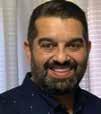


Dear Rachel, What is the secret to keeping a great relationship with your married children? I have two married children who live in-town, and two who live out of Atlanta. The in-towners naturally swing by more frequently for shorter durations. When the out-of-towners visit, they move in for a week or more, several times a year. These visits create memories, and I want them to be positive experiences. But this is where my challenge comes in. When we talk or get together at their homes or at a neutral place, like a park or child-centered activity, our communication is rich and meaningful. But when they visit our home, things spiral out of control. Neatness is a value of mine, which my children know. Yet, they allow their children to eat in every room in my house when I’ve repeatedly told them that I want food to stay in the kitchen. In addition, toys are scattered all over the house, which would almost be fine (except I don’t like toys in the kitchen) if they were put back at the visit’s end- but they are not.
Games are spilled out, and toys are rarely played with in an organized manner- buckets of toys get dumped together, and then a great deal of sorting and organizing is required to get things back into place. Adding insult to injury, during and after the visits, I become the cleaning lady, and I am left simmering with resentment as I spend several hours putting the house back together. This situa tion happens with all four of my married children, though it is exacerbated during the longer visits. How do I handle this situation?
It is difficult to maintain a loving, warm relationship when you feel disregarded and uncared about. When messes are created and left for you to tend to, it generates a feeling of “Your feelings don’t matter. We’ll do what we want.”
Even though the children assumedly do not feel this way, when your home is disregarded and figuratively torn apart, it’s natural to feel frustrated and uncared about. So, what’s a mom and grand ma to do?
It can be helpful to speak candidly to your children.
“I love when you come! It gives us such special time together! But I was thinking- sometimes, the place gets kind of messy, and that’s normal. Would you mind helping to clean up before you leave?”
One suggestion would be to offer those precious grandkids incentives for clean-up time, or even turn it into a game. Then cleaning up becomes much more appealing, and Grandma isn’t left with all the work.
Regarding rules like no eating out of the kitchen, that’s a hard one to maintain if you don’t have parental support- especially if you have more than one little one careening around in different direc tions at the same time. I think the main thing you can do is to calmly repeat your expectations.
“Food stays in the kitchen, sweetie.”
And while smothering little Judy with kisses, whisk her back into the kitchen and ask her if she’d like to sit at the table or in her highchair.
Also, don’t hesitate to call on your grown child to help with the situation.
“Dena, remember I asked for food to stay in the kitchen?”
Then quietly point to the little person who is gleefully tossing cracker crumbs under your couch, inside the air conditioner vents, and behind the curtains.
I think the main goal is to try to present your feelings and expectations lovingly and calmly.
Go with the assumption that your children and grandchildren are not purposely trying to make your life difficult, nor are they aiming to make you feel devalued and uncared for. They are simply reveling at being at Grandma’s and enjoying the atmosphere of warmth and unconditional love that permeates your home.
You obviously adore your children and grandchildren and make great efforts to maintain a strong, vibrant connection. Wishing you success in gently guiding them in the rules of your home while continuing to provide an atmosphere of unconditional love.
Regards, RachelAtlanta Jewish Times Advice Column
Got a problem? Email Rachel Stein, a certified life coach, at oyvey@ atljewishtimes.com describing your problem in 250 words or less. We want to hear from you and get helpful suggestions for your situation at the same time!
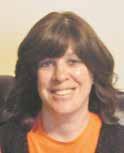
A proud young mother sees her son off to school on the first day. “Be a good boy, my bubbeleh! Be careful and think of Mummy, sweetest! Come right home on the bus, honey! Mummy loves you very much, baby!”
At the end of the day, she’s waiting for the bus and sweeps him into her arms. “And what did my love learn on his first day of school?”
“I learned that my name is David.”
n. A person, often an older relative, who delights in rooting out spoiled items in the refrigerator, particularly the refrigerator of someone they are visiting.
“Oy veh, somebody get Aunt Sonia out of our kitchen, or she’ll throw out this morning’s milk because she thinks it smells funny. She’s the family farfoilt finder."
From the Yiddish farfoilt, meaning “spoiled, rotten.”
OY VEY! HAVE I GOT A PROBLEM...



Andrew Lenard Chaiken, of Brooklyn, N.Y., passed away on Oct. 2 after a short illness. Born on Aug. 28, 1959, Andrew was the fourth son of Louis Chaiken and Syma Yellin.


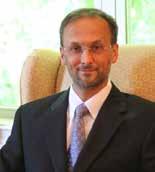
Andrew was a sweet, happy man with developmental disabilities that limited everything he could do other than give love and receive love from family and others who touched his life. He enjoyed eating pizza, Kit Kat bars, ice cream sandwiches and apples, and singing his life-long favorite songs from “Oliver!”
Andrew is survived by his father, Louis Chaiken, of Tinton Falls N.J.; brothers, Michael (Nathalie) of Grand Mere, Quebec, Canada; David (Ellen) of Jackson, N.J., and Fredric (Rita) of Atlanta, Ga.; along with an aunt, nephews, nieces, and cousins.
Andrew’s family is so grateful for the extraordinary care he received over many years by the dedicated and loving staff at the group homes in which he lived, espe cially at Avenue D in Brooklyn, personal advocates, and health care professionals.


In lieu of flowers, donations can be made to ADMH (Adult Disability Medical Healthcare) www.theadmh.org, P.O. Box 88534, Atlanta, GA 30356; or the CBT Includes Me Fund at Congregation B’nai Torah, 700 Mt. Vernon Hwy. NE., Sandy Springs. Ga. 30328.





Renee Davidoff Cobb, of Atlanta, Ga. passed away Oct. 1. She was born in Johannes burg, South Africa on Nov. 25, 1941, to Lottie Sieff Davidoff and David Hersch Davidoff, of blessed memory.

Renee and her husband of over 60 years, Rubin “Roy” Cobb, were born and raised in South Africa where they were married and be gan to raise their family. They immigrated to America in 1977 with their three children and settled in Atlanta, Ga. During the magical time since immigrating, they have enjoyed and cel ebrated many simchas and life events and seen their family expand and grow to eight grand children and four great-grandchildren.
Renee enjoyed a beautiful and treasured life centered upon family, love, Judaism, beau ty and respect. She was a devoted wife and an exemplary mother, grandmother and great-grandmother, taking personal interest and pride in every child, in-law child, grandchild, and great-grandchild. While not boastful of their accomplishments, she had a keen interest and pride in each of her grandchildren’s individual lives and gave her support, love and wisdom relentlessly.
As everyone who has ever met her knows, Renee was a beauty, inside and out, and universally loved by all she knew and met. She had a magnetic presence based on her natural grace, glamorous looks, and approachability, with a unique ability to make everyone around her feel good. She was truly interested in others from every walk of life and gave her love and time freely to others in her daily life. She was genu ine and caring to others, and captivated strangers with her charm and authenticity.
Her pride and joy her entire life were her family, her parents of blessed mem ory, her brothers- and sisters-in-law and families, and many close cousins who live in many continents around the world (who she stayed in touch with regularly!) and her beloved children, grandchildren and great-grandchildren. Renee would likely say that one of her proudest accomplishments was having her mother, Lottie, live with her and Roy in her home for the last 15 years of her mother’s life.
Following the family’s emigration from South Africa, Renee never lost sight of the bonds she shared with her extended family, and it became her duty to carry those into future generations. She was the glue and the matriarch of the Davidoff family, seamlessly connected to and integrated with the lives of her beloved cousins through out the U.S. and world. She did so with great ease and enjoyment, from phone calls to b’nai mitzvahs to weddings and more.
During her recent illness, Renee was showered with love and care literally 24/7 by her children, in-law children, brothers, and family, including daily calls from her sister-in-law, Sharon Davidoff. The family would not have been able to care for Renee without the unwavering comfort and companionship provided by her in-home care takers, Yolande, Claudia, and Mary. These kind women sustained her, comforted her, nurtured her, and loved her daily over the last four months. She, too, returned that love and left an impact on them.
In addition to her beloved husband, Roy, Renee Davidoff Cobb is survived by: her brothers, Sidney (Elaine) Davidoff of Melbourne, Australia, Brian (Sharon) Davidoff of Los Angeles, Calif.; children, Jody (David) Frankel, Sheli (Sam) Feldman, and Gavin (Melinda) Cobb, all of Atlanta, Ga.; her grandchildren, Adam (Miriam Leah) Frankel (Cleveland, Ohio), Shana Frankel, Ariel Frankel, Micah Frankel, Talia Feldman, Da vid Feldman, Justin Cobb, and Nicole Cobb; great-grandchildren Nechama Zissel, Ephraim, Sarah, and Eliezer Frankel. In addition to her immediate family, Renee is survived by a host of loving cousins, nieces, nephews, and friends, and their respec tive communities in Atlanta, Los Angeles, Boston, South Africa, Israel, Australia, To ronto, and London.
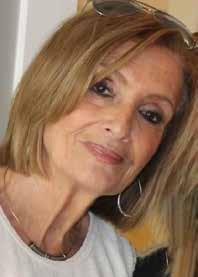
Contributions in honor of Renee’s life may be made to the Atlanta Jewish Acad emy or a charity of your choice. Dressler’s Jewish Funeral Care, 770-451-4599.
Theodora (Teddy) Schwartz Cohen, 95, passed away peacefully in her sleep in the comfort of her home in Atlanta on Sept. 13.
Born and raised in the Bronx, N.Y., Teddy graduated from William Howard Taft High School and earned a BS degree from New York University in 1948. She worked in the Philadelphia and Chicago hospital systems as part of her clinical training to be come a registered occupational therapist. Self-confident and independently minded, she moved in the early summer of 1949 to the Atlanta area for employment where she began work at Lawson VA Hospital as an occupational therapist for World War II veterans.
Within a few weeks of living in Atlanta, Teddy was encouraged to go on a blind date with Atlanta native Abner Cohen. Admired for her beauty and easy-going at titude, she was swept off her feet and engaged within six weeks. On Thanksgiving weekend of the same year, she married Abner L. Cohen in a ceremony officiated by Rabbi Jacob Rothschild at the Progressive Club.
Early in her marriage, Teddy readily transitioned from a working wife to a housewife to begin a family. Teddy, along with Abner, raised their children in a caring, supportive, and tolerant home environment. Teddy readily assimilated into Southern living and the Atlanta Jewish community with volunteer work in several organizations including B’nai B’rith and Brandeis University. She easily meshed with Abner’s brothers, in-laws, and cousins.
Family, friendships, recreation, and the arts were central to her life. Teddy and Abner developed an active social life of bowling, swimming, playing mahjong, bridge, and tennis with friends. With grace and enjoyment, she and Abner entertained many friends and relatives at their home. They loved traveling together, wintering in warm er climates, and had great adventures in Europe, Asia, and Africa.
After a breast cancer victory and a love-filled marriage of 60 years ending with her husband’s death, Teddy was able to retain most of her health barring a 20-year battle with Parkinson’s disease. Teddy continued her interests and friendships over the bridge and dinner tables of The Piedmont at Buckhead until the placement of COVID-19 socialization restrictions. For her private caregivers providing comfort and companionship, she expressed gratitude and daily humor, and was a great listener.
Teddy had the capacity to move forward in the face of adversity with strength and patience. She will be remembered by her children as a teacher by example rather than with words. Her reserved and collected composure provided a calm environ ment for raising a family and encouraging numerous close friendships that spanned many years in different geographic locations. She was quick witted, straight forward, and seldom without an opinion.
Teddy is survived by her devoted daughter, Jean; son, Charles (Chuck); son, Brad, and his wife, Judi; their son, Jordan; and her great-grandchildren, Sean, Ari, and Ally; as well as several nephews and nieces and other extended family members. Teddy was predeceased by her parents, Dr. Benjamin J., and Leah A. Schwartz; her older brother, Dr. Ira Schwartz; and her beloved husband, Abner L. Cohen in 2009.
Teddy’s expressed wishes were to be cremated without a funeral service. Later in 2022, at a private family celebration of her life, Teddy will be interred next to her husband and her parents in the Cohen Family Plot on Crest Lawn Memorial Park’s Cedar Hill in Atlanta.
For those who wish to honor Teddy’s memory with a donation the family sug gests the Parkinson’s Foundation, Weinstein Hospice, or a charity of the donor’s choice. Expressions of sympathy for the Cohen family may be shared online at obitu aries.neptunesociety.com/obituaries.
Davis Edward Dolezal, 38, passed away unexpectedly on Oct. 18. A native to At lanta, Davis is survived by his wife, Morgan; two beautiful daughters, Blakeleigh Shea and Jordan Carly; his parents, Cynthia and David Dolezal; sister, Julia (Brad and Hud son Hise); in-laws, Robyn and Ken Freedman; sister in-law, Hilary (Michael, Sloane, and Elle Freedman); grandmothers (Anita Freedman and Sheila Gerstein); and many loving, extended family members.
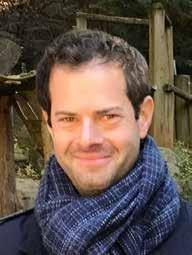
After graduating from George Walton Comprehensive High School, Davis enlist ed in the Marine Corps and served his country proudly in Iraq following the tragedies of 9/11. Davis was an avid golfer from an early age, thrived in the outdoors and loved the Falcons, Dawgs and Braves. He loved to travel, explore, and learn about new cul tures.
He will be missed so deeply by all who knew him. Graveside services were held on Thursday, Oct. 20 at Arlington Memorial Park. In lieu of flowers, memorial do nations may be made to the Travis Manion Foundation, www.travismanion.org. Dressler’s Jewish Funeral Care, 770-451-4999.
Kenneth Alan Kaufman, 80, of Atlanta passed away on Oct. 20. Kenny was born in Atlanta, Ga. on June 1, 1942.
He was predeceased by his parents, Saul and Rose Kaufman, and Bess Kaufman; his sister, Helaine Kaufman Buckwald; and his infant daughter, Rachel Michelle Kaufman. He is survived and lovingly remembered by his wife of 57 years, Sandra; children, Paul Kaufman (Meryl) and Jennifer Hickman (Andrew); his three grand children, Rachel, Sarah and Isaac; his niece, Julie Perlson (Marc); his nieces, Maryn and Alyssa; his beloved dog, Spencer; and many other family members in Atlanta, Charleston, and Birmingham.
Kenny lived a beautiful life surrounded by his family for whom he beamed with pride. Kenny had many friends and was known by all for his humorous personality and warm-hearted kind nature. Graveside funeral services were held on Sunday, Oct. 23 at Greenwood Cemetery. In lieu of flowers, the family encourages memorial dona tions to the charity of one’s choice. Baruch Dayan HaEmet. And may his memories be for a blessing. Arrangements by Dressler’s Jewish Funeral Care.
Gabriel Lawrence Pressman of Brookhav en, Ga. passed away unexpectedly Oct. 13 at the age of 43. Gabriel grew up in Atlanta, graduating from Riverwood High School in Sandy Springs before attending the University of Georgia, where he was a member of Tau Epsilon Phi fra ternity. He graduated from Georgia State Uni versity with degrees in international economics and modern languages and continued his stud ies at Università Ca’ Foscari Venezia in Venice, Italy, where he earned degrees in economics and business management and was the vale dictorian of international students in his grad uating class. He went on to earn an advanced degree from Università Ca’ Foscari Venezia in international management, graduating summa cum laude.
Gabriel was a man of many talents and passions: he was fluent in Italian, a gifted filmmaker, talented actor, marathon runner, and political activist. He produced vid eos for the prestigious Venice Biennale arts festival, acted in several Georgia-based television shows and movies (he was particularly excited when working on Marvel and DC projects), and was heavily involved in local politics through the Young Demo crats of Georgia and various political campaigns. An avid traveler, Gabriel spent much time in Europe even after completing his academic studies abroad, visiting numerous friends across the continent several times a year. He also loved traveling to New York and Los Angeles to visit his sisters, brothers-in-law, niece and four nephews, whom he doted on and who absolutely adored him in return.
Gabriel never met a stranger and was loved by all whose lives he touched here in Atlanta and across the globe. He was thoughtful, adventurous, funny, passionate, and cared deeply about his friends and family, never missing a birthday or special occa sion for his loved ones. Gabriel made everyone around him laugh with his quick wit and humor. He was curious, fearless, and always open to anything.
Though Gabriel was diagnosed with stage 4 kidney cancer last year and faced other health issues, he remained incredibly active, continuing his passion for longdistance running, his busy travel schedule, and his campaign work on behalf of the Democratic Party. His cancer was in remission at the time of his passing, and he con tinued to endure other health issues with grit and grace. Gabriel was defined by his full-throttled embrace of life and all it had to offer: every new adventure, new coun try, new friend, new passion, or skill to master, and new experience. Though he was taken from us too soon, his loved ones take comfort in knowing he lived a full life in just 43 years.
He was preceded in death by his grandparents, Louis and Fay Lewitz, and Vicky and Joel Pressman. He is survived by his parents, Sandi and Richard Pressman of Brookhaven; sister, Amanda Pressman-Smoot, and brother-in-law, Matt Smoot, of New York City; sister, Stephanie Pressman, and brother-in-law, Russ Gooberman, of Los Angeles; adoring niece and nephews, Evan, Ari, Lulu, Julian, and Milo; and many loving aunts, uncles, and cousins, all of whom will miss Gabriel dearly.
A graveside funeral was held on Sunday, Oct. 23 at Arlington Memorial Park in Sandy Springs. In lieu of flowers, the family requests that donations in Gabriel’s memory be made to the Kidney Cancer Program Fund at Winship Cancer Institute of Emory University, 1762 Clifton Road, Suite 1400, Atlanta, GA 30322. To sign the online guestbook, visit www.dresslerjewishfunerals.com.
Obituaries in the AJT are written and paid for by the families; contact Editor and Managing Publisher Kaylene Ladinsky at kaylene@atljewishtimes.com or 404-883-2130, ext. 100, for details about submission, rates and payments. Death notices, which provide basic details, are free and run as space is available; send submissions to editor@atljewishtimes.com.

Thursday, Nov 3 • 7:30 pm


And There Was Light: Abraham Lincoln and the American Struggle

Saturday, Nov 5 • 8:00 pm

Lies My Mother Told Me: Tall Tales from a Short Woman


Sunday, Nov 6 • 7:00 pm
Bernie Marcus with Catherine Lewis Kick Up Some Dust

Monday, Nov 7 • 7:30 pm
Ticking Clock: Behind the Scenes at 60 Minutes

Wednesday, Nov 9 • 7:30 pm
Brazen: My Unorthodox Journey from Long Sleeves to Lingerie





Saturday, Nov 12 • 8:00 pm
The Many Lives of Andrew Young

Sunday, Nov 13 • 7:30 pm
Nikki R. Haley

If You Want Something Done: Leadership Lessons from Bold Women






Tuesday, Nov 15 • 7:30 pm
Daughter of Paul Newman and Joanne Woodward Clea Newman Soderlund

The Extraordinary Life of an Ordinary Man: A Memoir by Paul Newman

Wednesday, Nov 16 • 7:30 pm
Michael F. Roizen, M.D.


The Great Age Reboot: Cracking the Longevity Code for a Younger Tomorrow




Saturday, Nov 19 • 8:00 pm

Deaf Utopia: A Memoir — and a Love Letter to a Way of Life


Contact pam.morton@atlantajcc.org or 678.812.3981.
brown paper bags of all sizes and shapes.
I must make mention of kitchen towels, sheets, pillowcases, and bath towels. Some of these towels were worn to the point of being paper thin, and older than time itself. Obvi ously, the towels were hoarding many fond memories.
Shaindle Schmuckler Shaindle’s ShpielMany years ago, I used to col lect owls. Even today, I could not say why. I don’t even like owls. What I can tell you is, one sun ny day in Tampa, Fla., where we lived for 10-plus years, I abruptly made a formal and very loud announcement: No more owls. For G-d’s sake, I was receiving owls upon owls for every occasion. I am not exaggerating.
Here are a few examples: birthday; Cha nukah; invited to Shaindle and Gene’s home... she has an owl collection, easy gift, bring an other owl to add to her vast collection. It got to the point where I seriously considered a primal scream. I always was a polite receiver of these farkakteh (miserable) owls; however, I could feel the scream building.
I am not a hoarder, or, generally speak ing, not a collector. Truth be told, I am only interested in collecting and distributing hugs. Hokey? I don’t think so. I am your basic “get rid of stuff” type of person. I can only toler ate so much stuff. I am an organizer. Not an obsessive-compulsive organizer, just a plain ol’ organizer. When I hit my limit, it’s off to the dumpster or Goodwill I go.
I have, however, been blessed with knowing a few hoarders in my lifetime. My husband for one. It took a great deal of inner strength on my part to keep his collections, from stamps, trucks, cameras, photography equipment, and books to name a few, all un der control.
Let’s talk a little about the other won derful hoarders I have known and loved. Let us all send smiles to, not surprisingly, Gene’s mom, his sister, two of my aunts and all those dear people who practiced the “fa’later bags” theory.
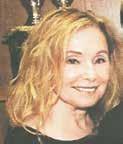
Given there are different strokes for dif ferent folks, I will now attempt to list some of the hoarder specials, and where they can be found: ketchup packets; the not so popular mustard packets; and the very popular may onnaise packets; strawberry jelly packets; and the not quite as popular grape jelly packets; and the very sought after pink Sweet’n Low packets; the sky-blue Equal packets; the lovely yellow Splenda packets; and let us not forget the white true sugar packets. These soughtafter packets can be found in virtually any and all restaurants. Napkins, as well as salt and pepper dispensers, are some hoarder’s favorites. I would be remiss in not mention ing newspapers (ancient, old, and new) and
Should you be seated at a restaurant without these items of interest on your table, don’t yell at your waitstaff. You may be the lucky patron seated directly after one of these patrons with a hoarder personality who has left the building with his/her haul.

Fa’later bags: I do believe this term was conceived by the New Americans vacationing in the Catskill summer resorts. These bags, or pocketbooks, were carefully and not so sur reptitiously filled with leftovers and as many rolls as both right and left hands could gather. Later, when hunger would strike, or there was just a need for something to fill their tummies, they could create for themselves a late afternoon snack or warm rolls for their morning snack before breakfast, which they enjoyed in their bungalows or hotel rooms.
Some background as to how I obtained this firsthand experience of the fa’later bags. Gene, that would be my hubby, and I worked in the same children’s summer camp. It was an expansive property in Hopewell Junction, N.Y., up in the New York mountains. The camp included a large facility, including bun galows and a hotel for adults and their fami lies, many of whom vacationed at the camp for portions of the summer.
Camp Kinder Ring was also a very popular resort for many working-class fami lies who planned a long vacation for Labor Day weekend. After the children’s summer camp experience ended, and the buses car ried the campers and staff back to the reality of school and their parents’ rules, and camp was closed for the winter, Gene and I worked as waitstaff for these Labor Day vacationers. This is where we expanded our vocabulary to include words like “fa’later bags,” and where I developed a new respect for: “Girlie, the soup is cold and too salty; go fix it,” and for wait staff in general.
You must be wondering how and when did I unearth the reality that we had so many hoarders in our families. Well, to begin with, I had a front row seat to my husband's mishi gas. I am, fortunately, the polar opposite of my handsome, funny, athletic, smart-as-awhip husband, and so I was able to keep our lives in check. I unearthed my beloved aunt’s and mothers-in-law’s obsessions after their deaths, when I was part of the teams who were tasked with gathering and sorting what stays and what goes.
And there you have it! ì


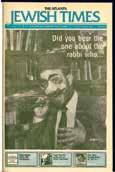

























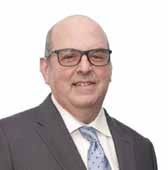










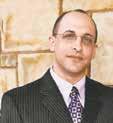







A&O is honored to present timepieces and fine jewelry from the collections of Atlanta notables Joel Katz and Marjorie & Ralph Knowles in this unprecedented single auction session. This auction will feature over 370 men’s and women’s watches, bracelets, rings, necklaces, and other fine jewelry from renowned makers and brands including Rolex, Audemars Piguet, Cartier, Laura Munder, Nicholas Varney, and more.
Mr. Katz is a renowned entertainment attorney who has represented during his career such clients as Jimmy Buffet, Michael Jackson, Willie Nelson, Julio Iglesias, and the Grammys.
Known for their passion for justice and equality, Marjorie and Ralph Knowles were revered legislators, educators, and collectors of fine jewelry and watches.
Important Jewelry & Timepieces from the Collection of Joel A. Katz and the Estate of Marjorie Knowles















November 18 | Auction begins at 10:00AM Auction Preview Wednesday, November 16
Bidding now available directly at bid.AandOauctions.com, also at LiveAuctioneers & Invaluable


